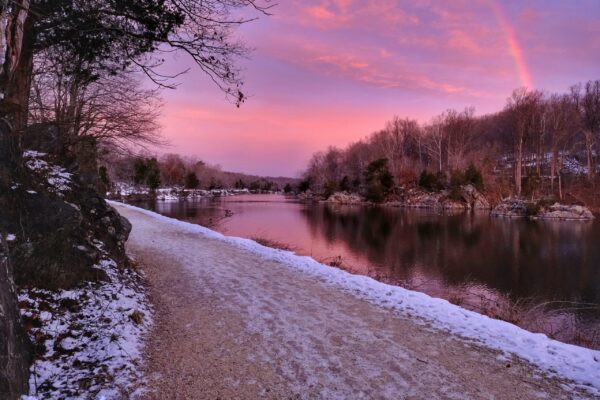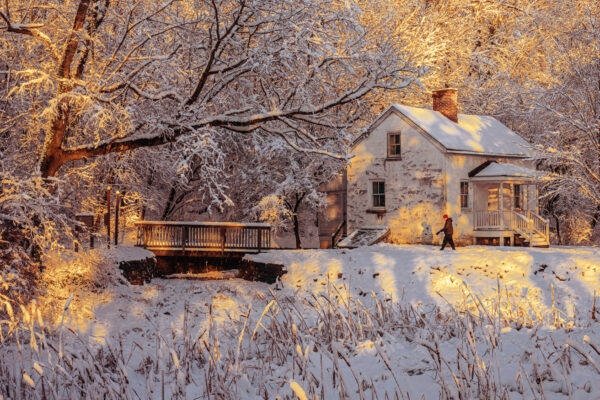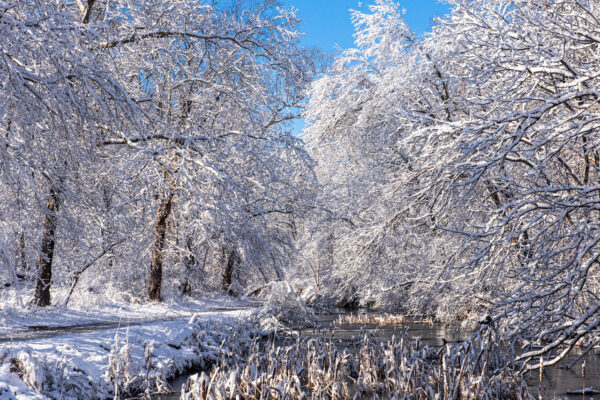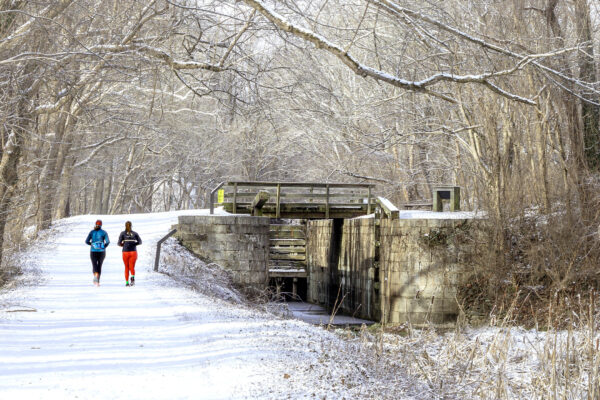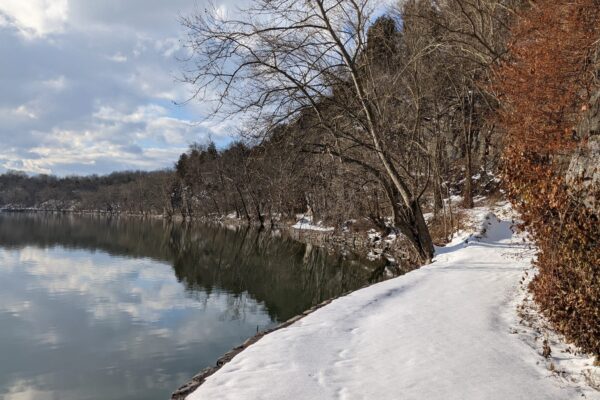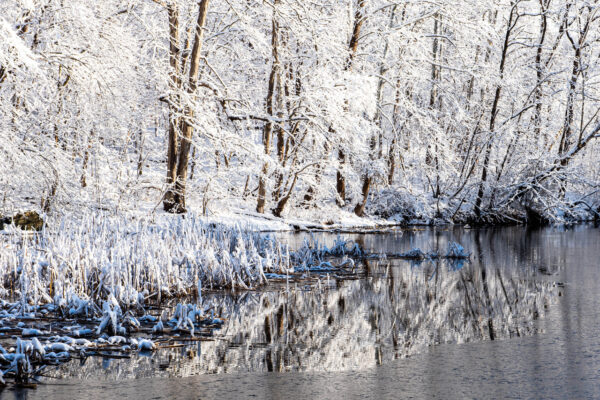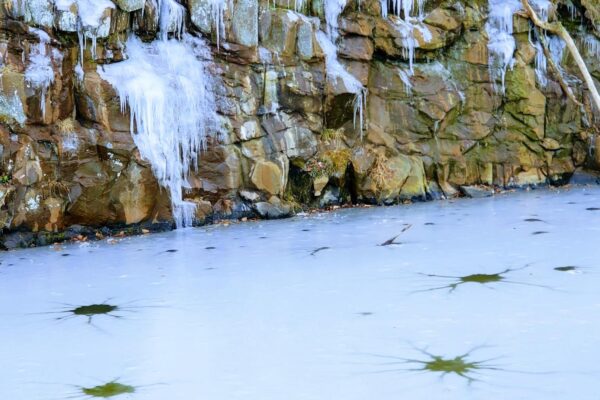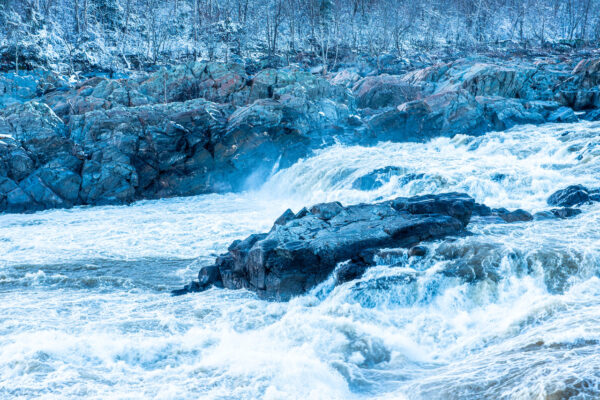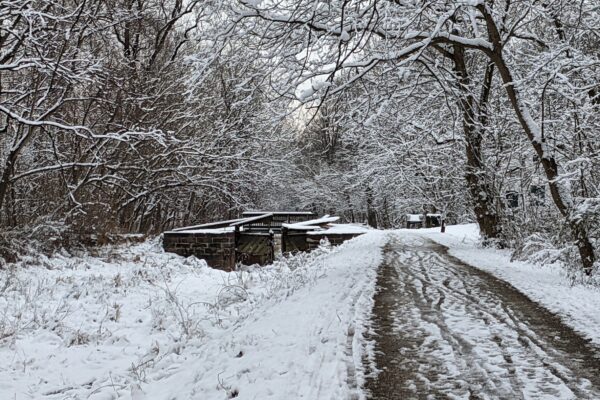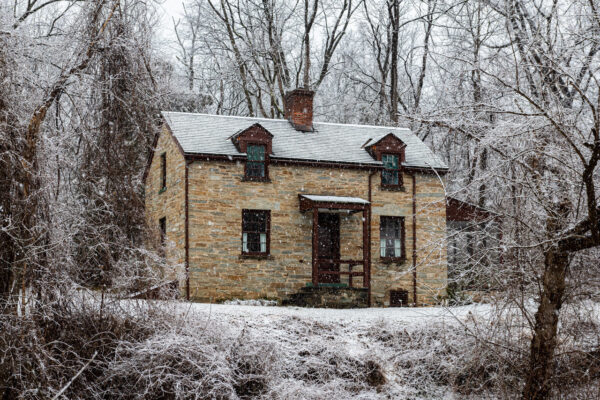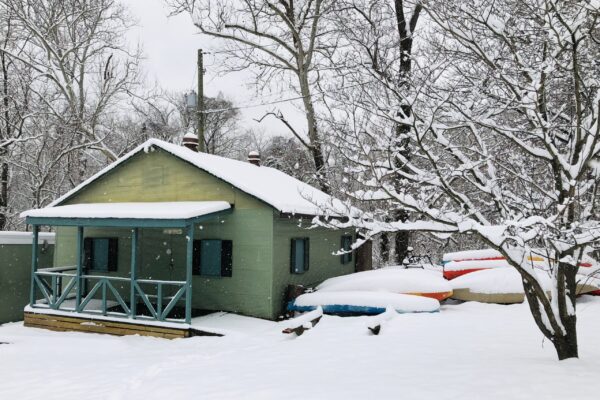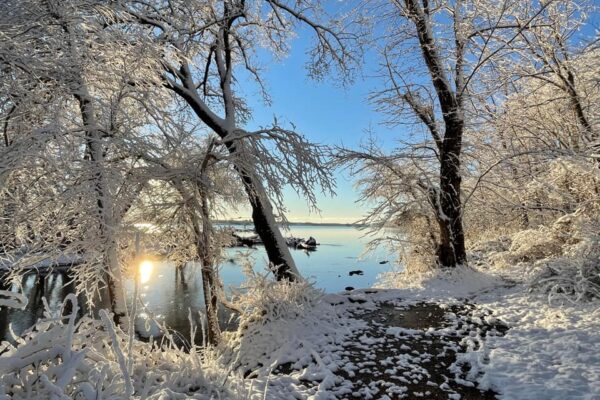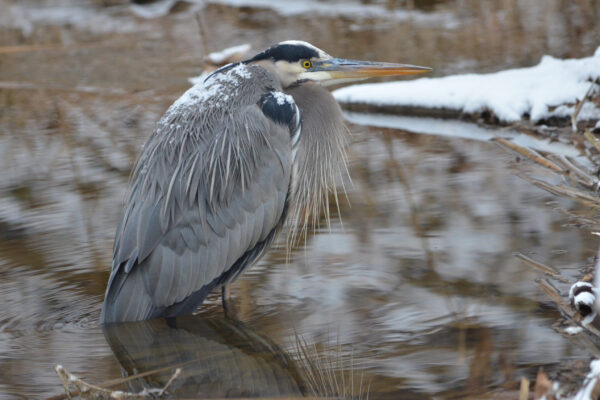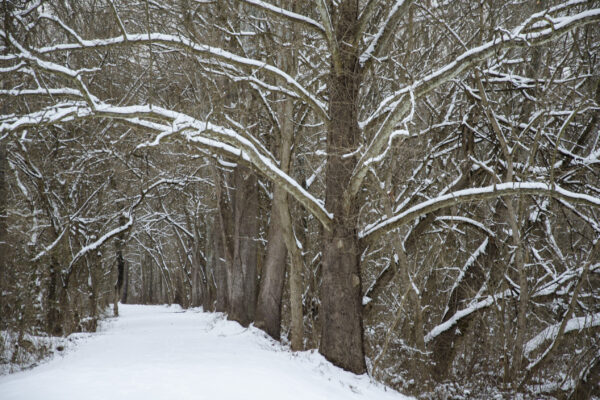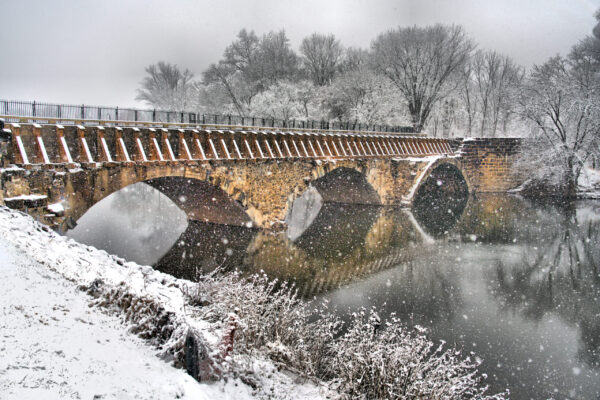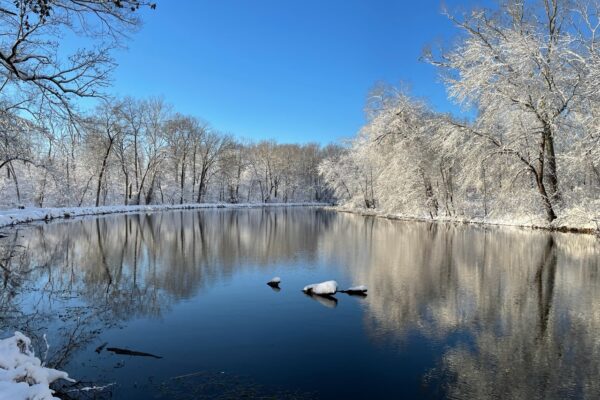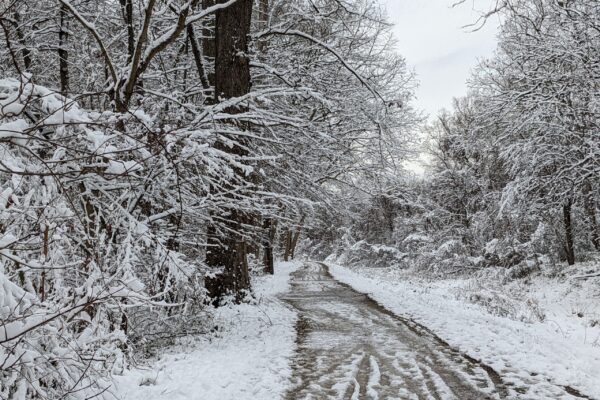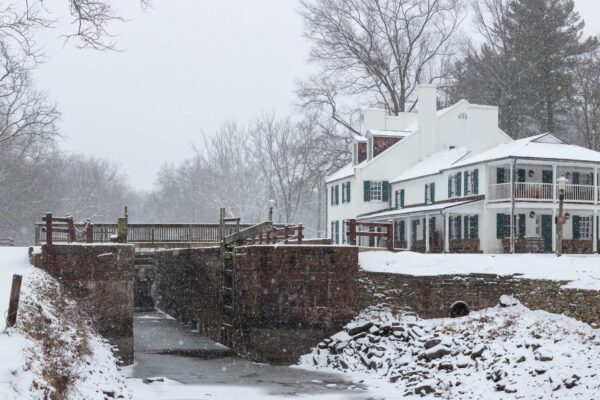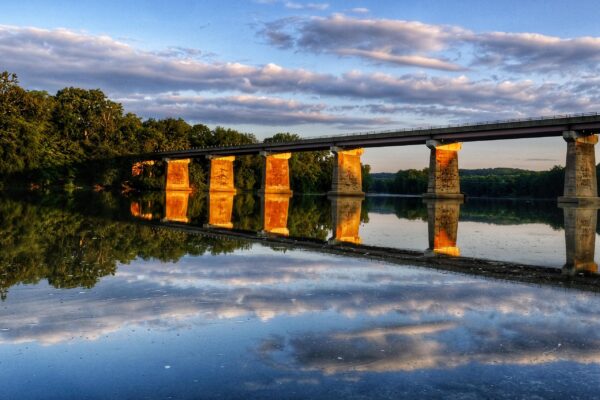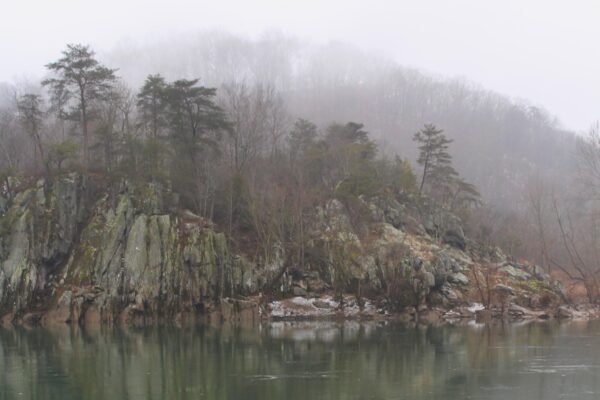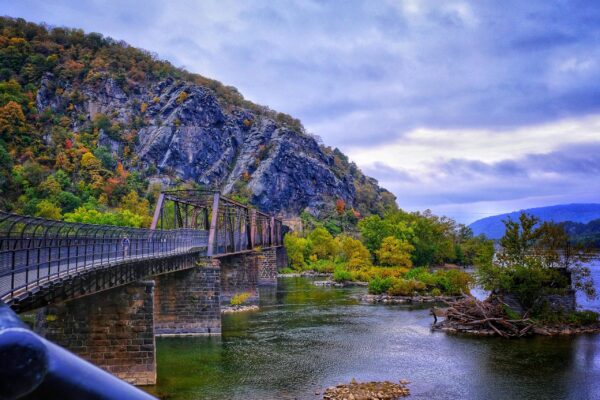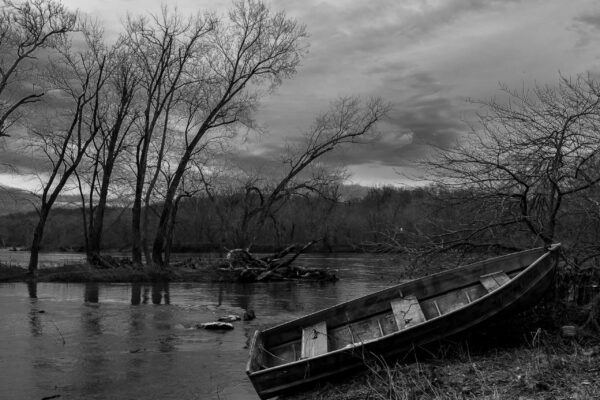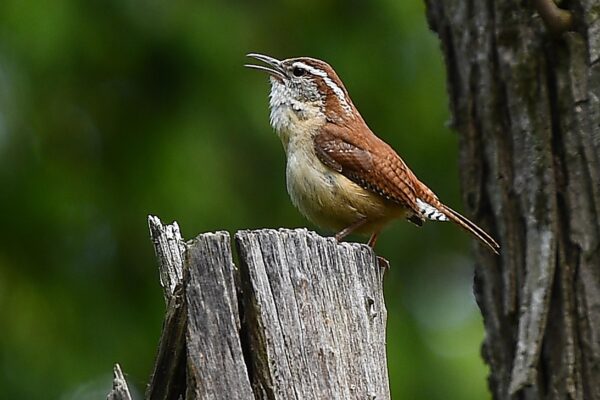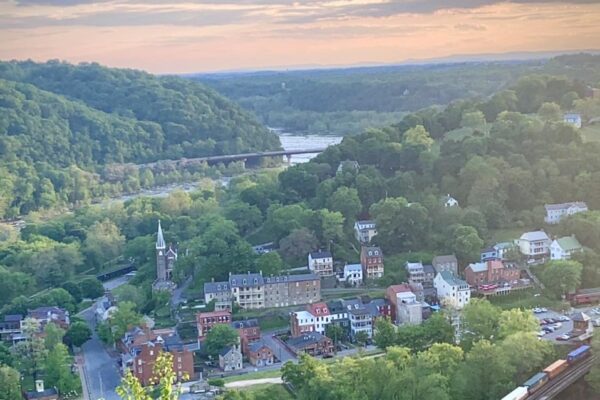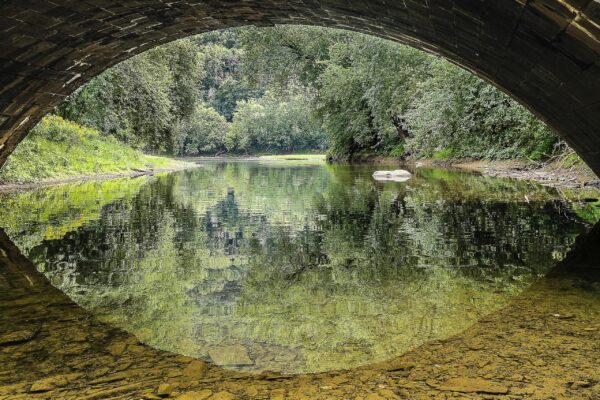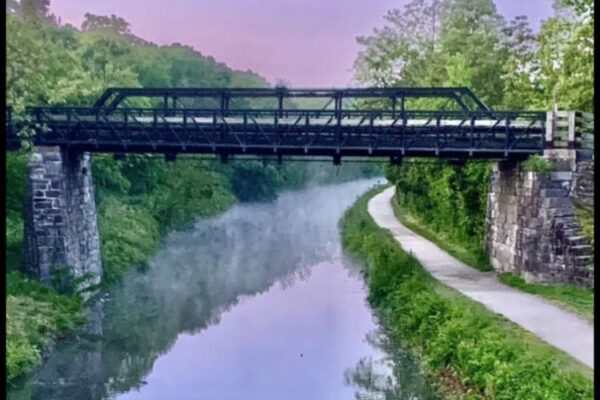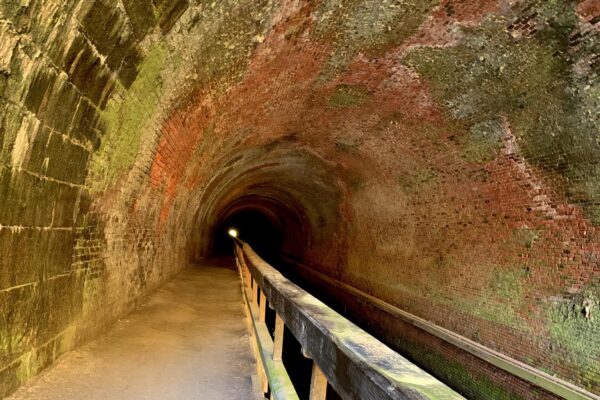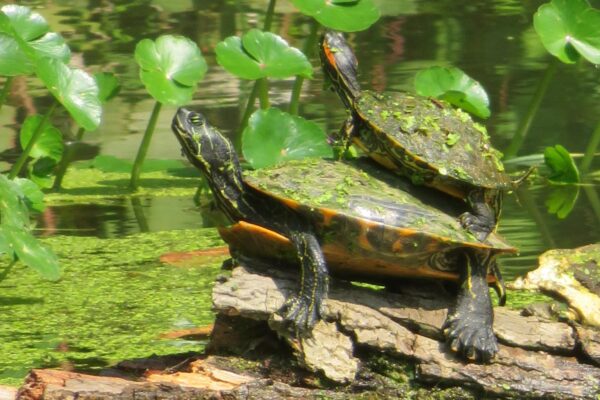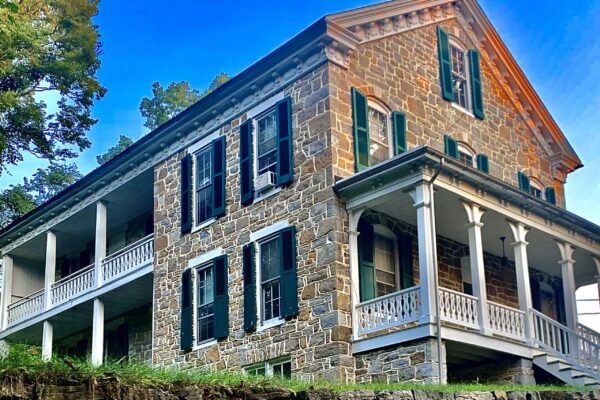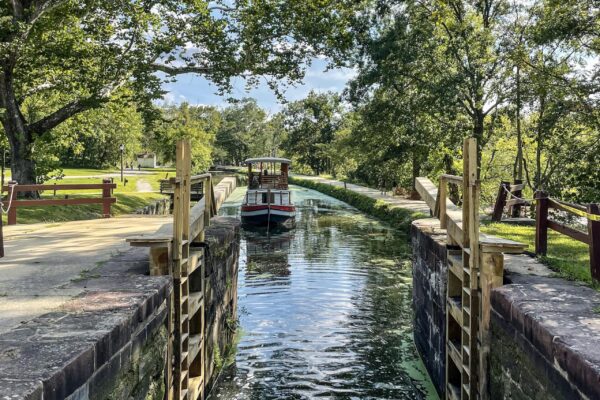Thank you for your interest in partnering with the C&O Canal Trust. Our team will review your inquiry, and you can expect to hear from us within one week.
Corporate and Nonprofit Stewardship Interest Form
Thank you for your interest in partnering with the C&O Canal Trust. Our team will review your inquiry, and you can expect to hear from us within one week. Please be aware that we need at least one month lead time to coordinate a stewardship event.
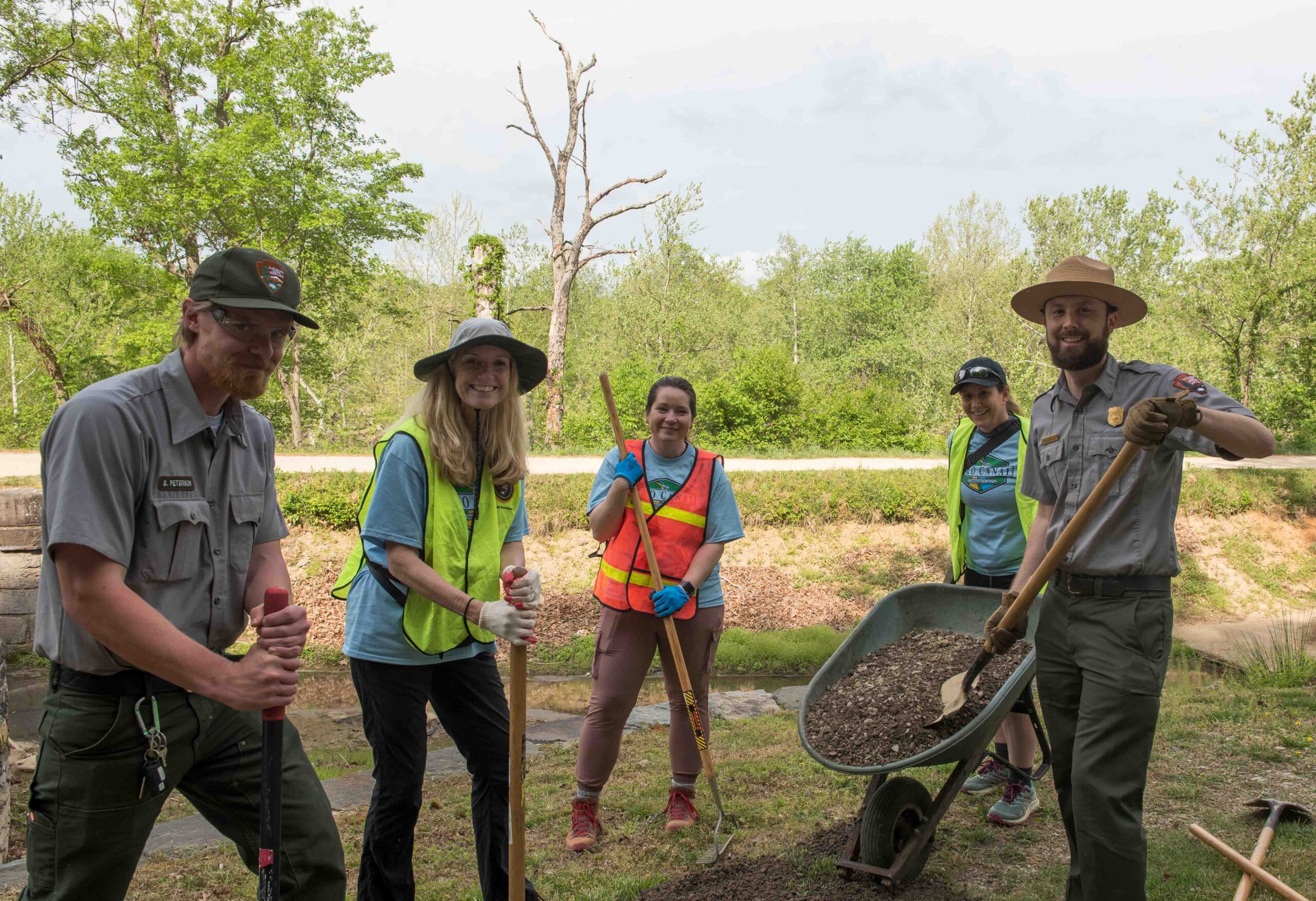
Photo by Francis Grant-Suttie
Canal Community Days at Great Falls
April 22, 2023
9 a.m. – 12 p.m.
Thank you to all the volunteers who joined us. You helped Make This Park Shine!
Impact Report
108 Volunteers:
- Removed 900 pounds of trash
- Removed 900 pounds of invasive plants
- Laid 50 yards of gravel footpath
- Spread 15 cubic yards of mulch
- Painted 3 park structures
- Spread 65 yards of mulch and gravel
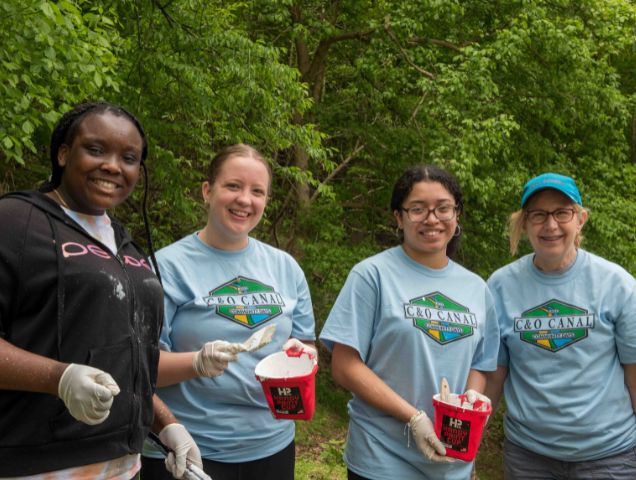
Photo by Francis Grant-Suttie

Photo by Francis Grant-Suttie
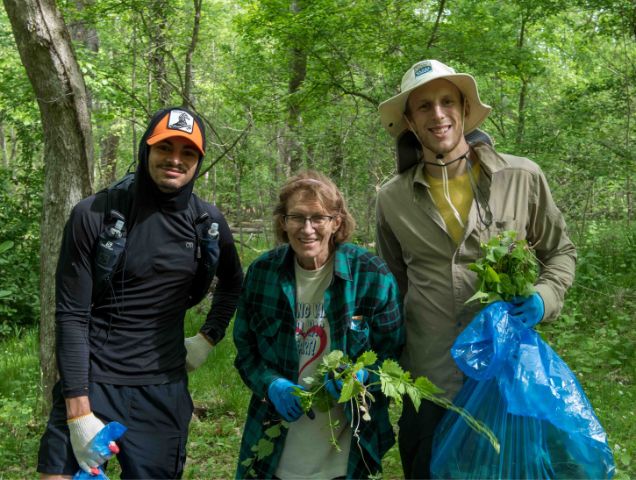
Photo by Francis Grant-Suttie
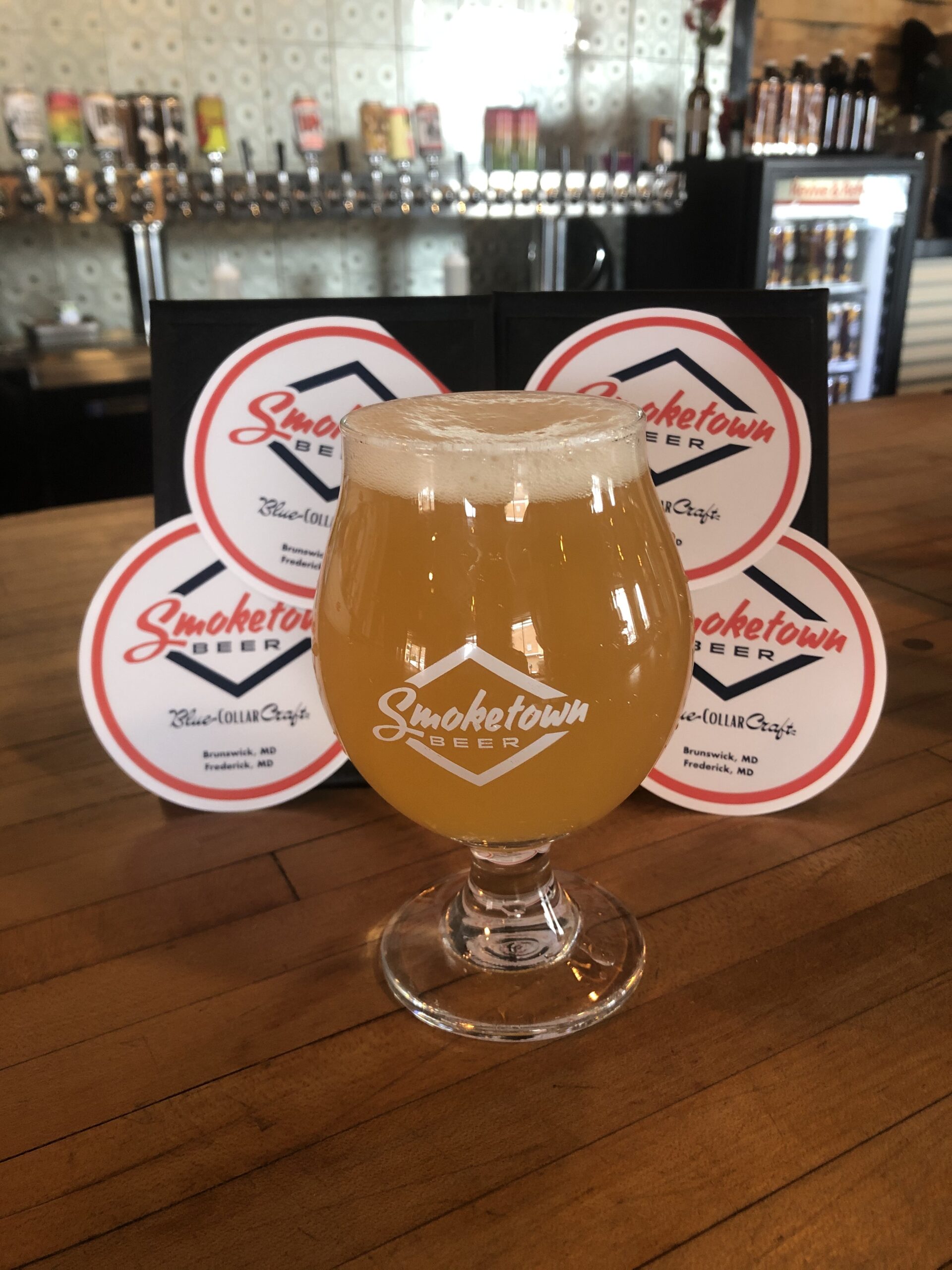
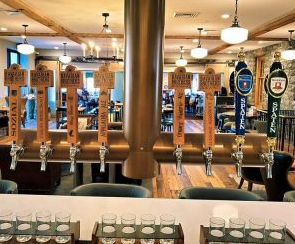

Step out onto the towpath this winter and experience the magic of the C&O Canal blanketed in snow. Be mindful of winter conditions when visiting the Park and always check the C&O Canal National Historical Park’s website and social media pages prior to your visit.
Enjoy these photos of our park from the comfort of your home!
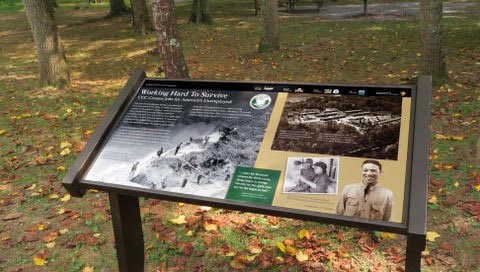

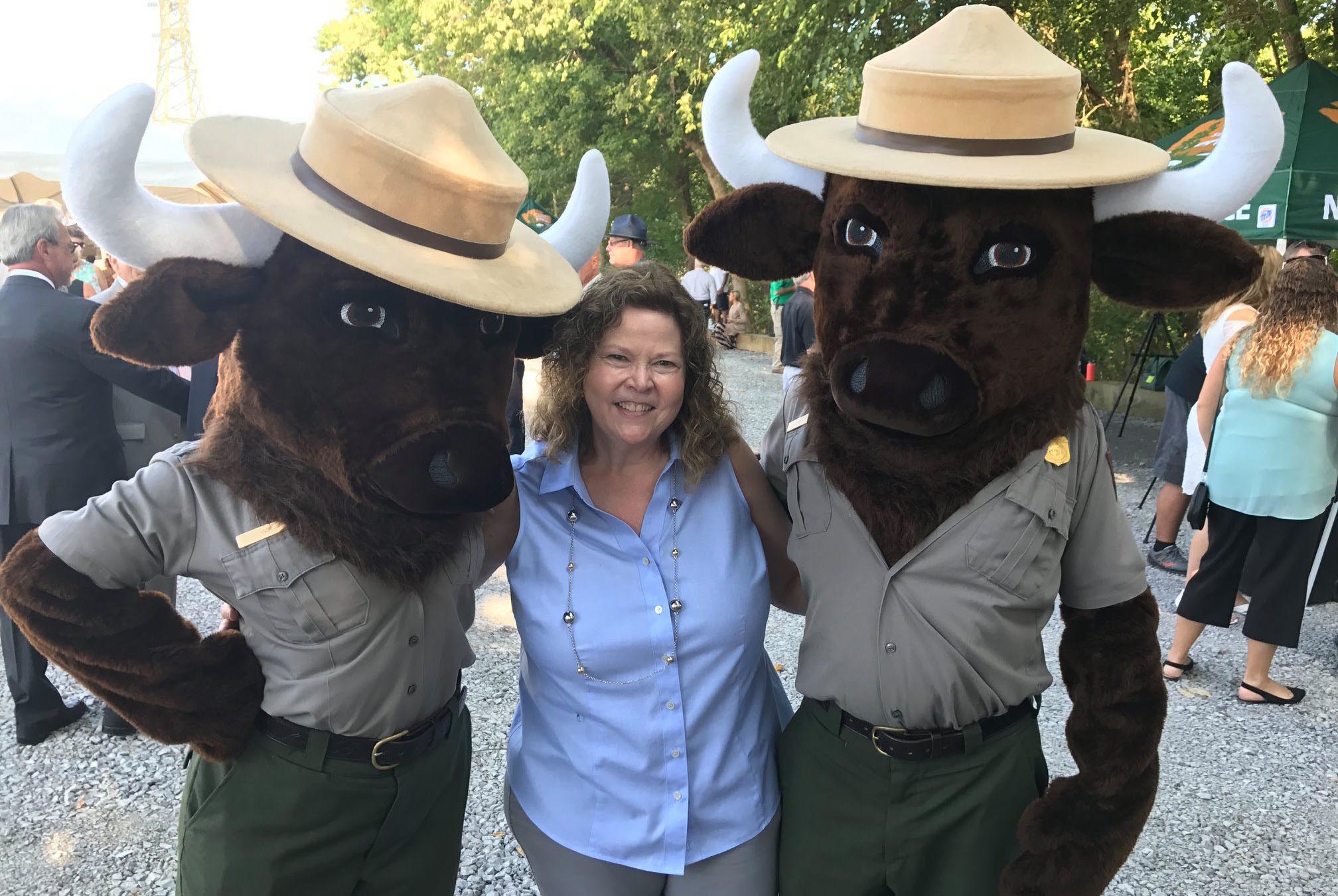
To celebrate the 50th anniversary of the C&O Canal becoming a National Historical Park, we are featuring 50 Canal Stories throughout 2021. Each story will take a look at a person’s relationship with the C&O Canal. Whether an NPS ranger, a volunteer, or a visitor, everyone has a story to tell about the canal! If you want to share your story, submit it to us at the link here, email it to us at [email protected] or post it on your social media feeds with the hashtag #MyCanalStory.
Robin Zanotti, President of the C&O Canal Trust
It’s my honor to provide a wrap-up of this year’s 50 Canal Stories. It has been a weekly series that invited you to honor the C&O Canal National Historical Park’s 50th Anniversary by sharing your unique relationship with the Park.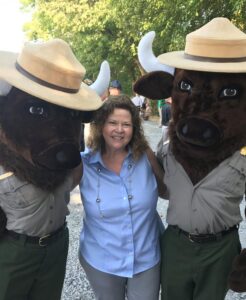
Before I get to the special aspect of wrapping up this series, I want to start and then end with my personal relationship with the park. A number of years before I began working at the Trust, my husband and I decided to adopt an old dog. Muni’s owner had died and she waited for her new family at the Berkeley County Humane Society. She was as sweet as pie, which I would tell anyone who asked. As it relates to this story though, she was my walking companion. Up until the week she died, we often walked 3-4 miles on the towpath. It was our special place and it has remained so for me, despite losing Muni.
In my official capacity, I’ve been awed by the unique and compelling stories at least 49 of you have taken the time to share with us. Friendship, family and romance; exercise and personal challenges; such interesting history; and the beauty – oh, the beauty! Truly remarkable themes.
Thank you for joining all of us at the C&O Canal Trust in marking these special 50 years, well celebrated. It’s a labor of love for us because to a person, each member of my staff has a unique story of their connection to the park.
Back to my relationship with the park. As the president, I often hear the stories of others, as they explain why they donate, volunteer, or serve on our board. We immediately have something in common. For me, that’s the real story that I can uniquely share. I have such a cool job! Thank you for entrusting your stories to me as we jointly work to preserve and protect the park so that more stories may be told by future generations.
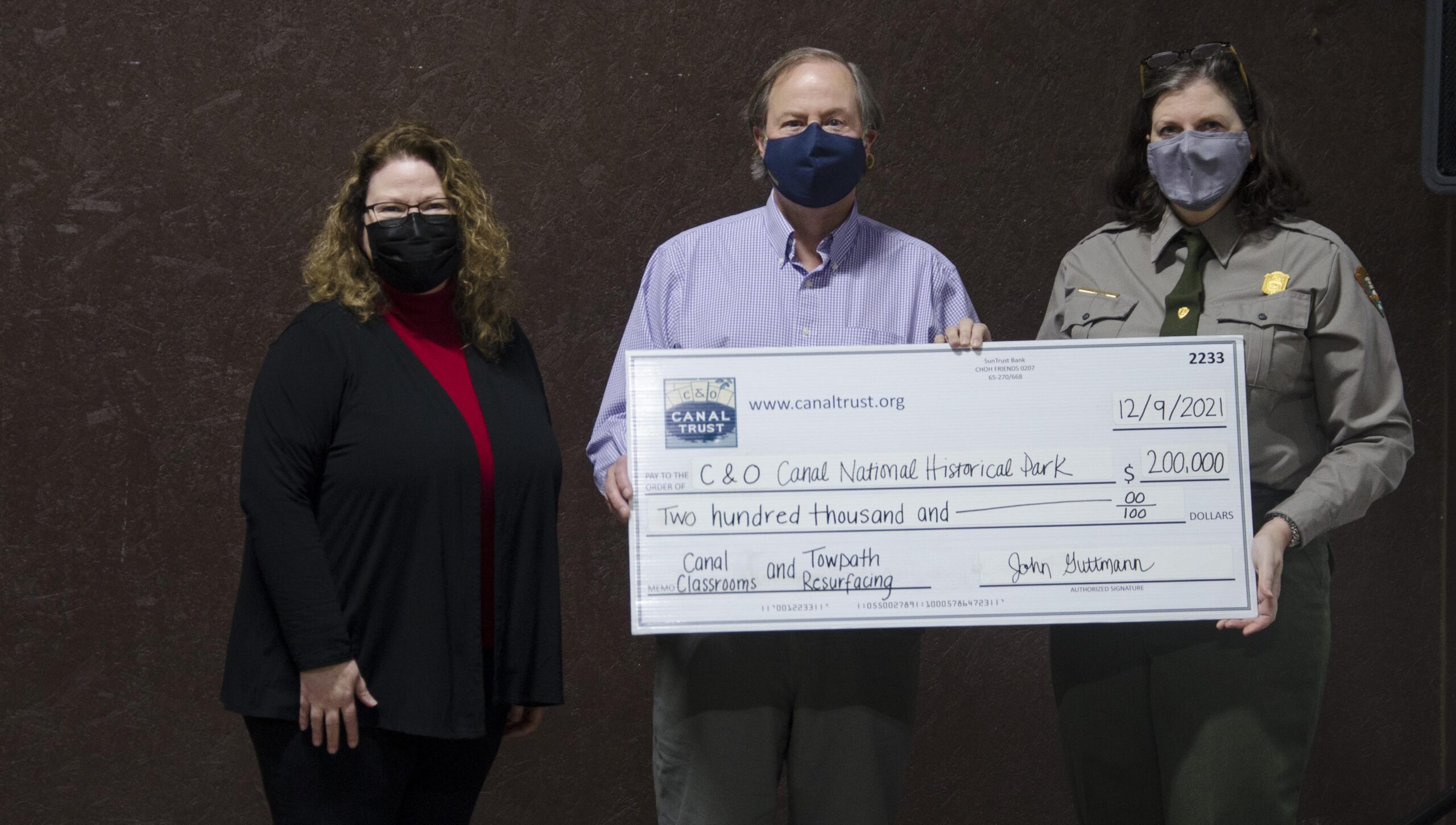
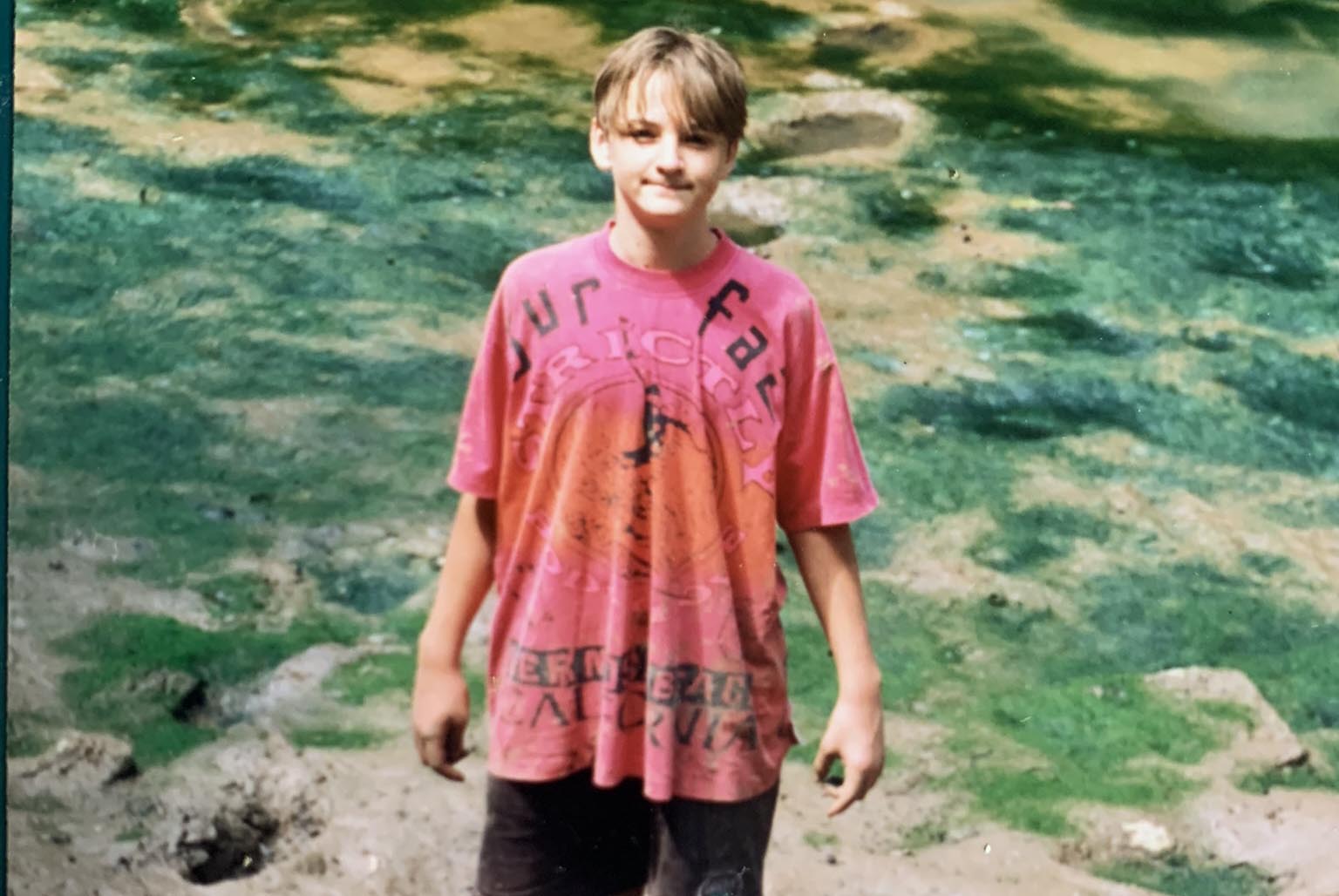
To celebrate the 50th anniversary of the C&O Canal becoming a National Historical Park, we are featuring 50 Canal Stories throughout 2021. Each story will take a look at a person’s relationship with the C&O Canal. Whether an NPS ranger, a volunteer, or a visitor, everyone has a story to tell about the canal! If you want to share your story, submit it to us at the link here, email it to us at [email protected] or post it on your social media feeds with the hashtag #MyCanalStory.
Dane Francis Trembath, Herpetologist at the Australian Museum and Friend of the C&O Canal
Dane: In December of 1988 my family moved to Cabin John, Maryland and I was very lucky to live a short walk from Lock 8 on the C&O Canal. At that time, I was nine years old, and I used to accompany my mother on walks along the footpath in the afternoon after school. It was at this young age that I really started to appreciate the amount of nature that was essentially on my doorstop. Just before dusk we would always see the Beavers, which I really liked, and it was great to watch the canal change over the seasons.
As I got older, I was able to venture on my own adventures along the C&O Canal with a few trusty friends. Every day after school we would head down to Lock 8 and either go fishing along the Canal or the Potomac River, and would often return covered in mud, just before dark. As teenagers, this was a great escape from school life and due to the size of the area, you could really explore.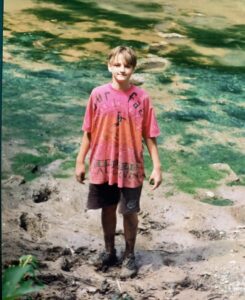
Apart from the fishing, the main thing that my friends and I enjoyed finding was reptiles and amphibians. During summer, you could walk along the footpath and easily spot Eastern Painted Turtles (Chrysemys picta) and Northern Red-bellied Turtles (Pseudemys rubriventris) basking on fallen logs in the sun. Along the edge of the Canal in the vegetation was Northern Water Snakes (Nerodia sipedon) and Garter Snakes (Thamnophis sirtalis). Sometimes you would also see Eastern Box Turtles (Terrapene carolina) and Eastern Rat Snakes (Pantherophis alleghaniensis) crossing the footpath. On dusk you could also see gigantic Common Snapping Turtles (Chelydra serpentina) surface from their daytime retreats for a breath of air and then resubmerge.
By going regularly and observing these animals, we were able to learn a lot about them and the natural world. This led to us actually doing research in our school library on these animals and I remember that we would see pictures of things that could live there in books, and then spend weeks trying to actually find them in life. This was when I decided that I should become a Herpetologist, a scientist that studied reptiles and amphibians
Every couple of years, due to flood damage, the C&O Canal was drained, and all the fish, turtles, and lots of tadpoles were confined to large pools. As we absolutely adored these animals, my friends and I would enter the knee-high mud and with a bucket brigade, rescue these animals and move them to the Potomac River or an adjacent lock if it had sufficient water. During these forays we also go to see all the different kinds of fish that lived there also.
In those days, most of these animals were very common, but unfortunately some were already in decline. I remember vividly finding a very old Wood Turtle (Glyptemys insculpta) on an island in the Potomac River and wondering why I had never seen them before. This beautiful turtle species is now endangered throughout much of its former range, largely due to habitat destruction.
In 1997, I graduated from Walt Whitman High School and in 1998 I was enrolled in a Degree in Zoology at James Cook University, Townsville, Queensland, Australia. Going from Maryland to Tropical Australia was an amazing experience, and I was able to learn about Australian reptiles and amphibians. I even did a Masters degree on Australian Freshwater Turtles.
I am now currently employed as the Herpetological Technician at the Australian Museum Herpetology Department in Sydney where I help manage the largest scientific reference collection of reptiles and amphibians in Australia. As we have extensive collections, including specimens from the United States, I still smile when I see turtle specimens of species that I would have observed along the C&O Canal.
https://australian.museum/
In January of 2019, I was able to return for a walk along the C&O Canal. Despite the usual January conditions, it was a warmish day and I was very excited to see a turtle had actually come out of hibernation to bask on a log. As I sat there looking at it, I wondered that it could possibly be one of the ones I saw many years ago, as turtles are now easily known to live 20+ years in the wild.
This past year, in 2021, we received so many great photo contest entries. From iconic nature pictures to mesmerizing sunsets to beautiful day-trips along the towpath, we have seen the best highlights of the C&O Canal National Historical Park.
These are your favorite photos, the contest winners of our monthly photo contest! Check them out below and reminisce with us about 2021.
Submit your photos of the Park to be considered for our monthly photo contest here.
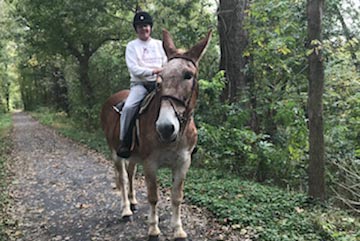
To celebrate the 50th anniversary of the C&O Canal becoming a National Historical Park, we are featuring 50 Canal Stories throughout 2021. Each story will take a look at a person’s relationship with the C&O Canal. Whether an NPS ranger, a volunteer, or a visitor, everyone has a story to tell about the canal! If you want to share your story, submit it to us at the link here, email it to us at [email protected] or post it on your social media feeds with the hashtag #MyCanalStory.
Kathy Wilt, Visitor to the C&O Canal and Mule Owner
C&O Canal Trust: What is your relationship / history with the C&O Canal?
Kathy: As a child I’d go bike riding and horseback riding along the canal. It’s a great trail for conditioning horses. I also enjoy kayaking, walking, and biking in the park.
C&O Canal Trust: When did you first learn of the C&O Canal?
Kathy: Having grown up near the C&O Canal, it’s easy to take it for granted. It’s so accessible, and I appreciate what’s been done to improve that. The new parking lot at Point of Rocks is amazing! I also appreciate the new boat ramps and the repair work that is done after flooding.
C&O Canal Trust: You recently purchased a mule! What is her name?
Kathy: I purchased MayBelle in March. She’s a Belgian Cross who worked as an Amish draft mule and is a little over 16 hands high. She loves snacking on apples.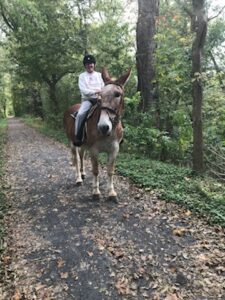
C&O Canal Trust: Can you tell us about that experience and what prompted you to get one?
Kathy: Before MayBelle, I rode the towpath with my first mule, Sweet Thing, for 27 years. Having ridden both horses and mules, I find that mules make excellent riding companions. They’re intelligent, strong, cooperative, and sturdy. It’s easy to see why they were the favorite animal for pulling the barges. They also live longer than horses.
It’s not a competition, though. Horses and mules get along very well. On Sweet Things’s first night on my farm, she jumped her 4 foot high stable door just so she could meet my thoroughbred. Now, MayBelle is a beloved companion of my pony, Little Teddy.
Although passing trains don’t bother MayBelle, she gets nervous when cyclists move around her quickly. I always appreciate people who move gently and slowly around her. Slowing down and seeing a mule on the towpath, you get a chance to enjoy the towpath from a historical perspective as it was over 100 years ago.
C&O Canal Trust: What is it like riding mules on the towpath?
Kathy: Riding mules on the towpath allows me to see it like the people who worked here so long ago. I love to think of the days of barges being pulled by mules like mine.
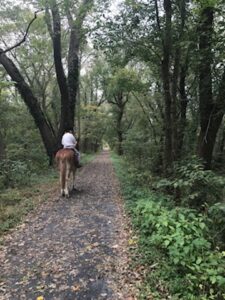 C&O Canal Trust:How do you take care of MayBelle?
C&O Canal Trust:How do you take care of MayBelle?
Kathy: MayBelle lives on my farm with the other animals. There’s shelter and plenty of grass for her. I also provide her with grain, hay, and treats. A farrier will care for her feet. Mule shoes are longer and narrower than horse shoes.
C&O Canal Trust: Do you have a favorite memory of the Park?
Kathy: All of my memories in the C&O Canal park are favorites. It’s wonderful seeing eagles nesting in sycamore branches. I love riding in the fall and enjoying the golden, yellow leaves. Winter is beautiful, especially when there is snow. Spring brings bluebells and wood ducks.
C&O Canal Trust: What is your favorite place or section of the C&O Canal?
Kathy: The section between Harpers Ferry and Dargans Bend has a beautiful view of the river and the land across it. I love being able to see down the Potomac for a distance. There’s also the train track on the other side of the canal. It helps tie you to the history of the place.
C&O Canal Trust: Finally, what does the canal mean to you?
Kathy: The C&O Canal National Historical Park is a natural place with great beauty. Its proximity means I can enjoy it often in many ways. It’s a good place for federal recreation money to go to, and it’s a good place for nature and history.
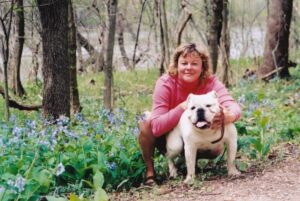
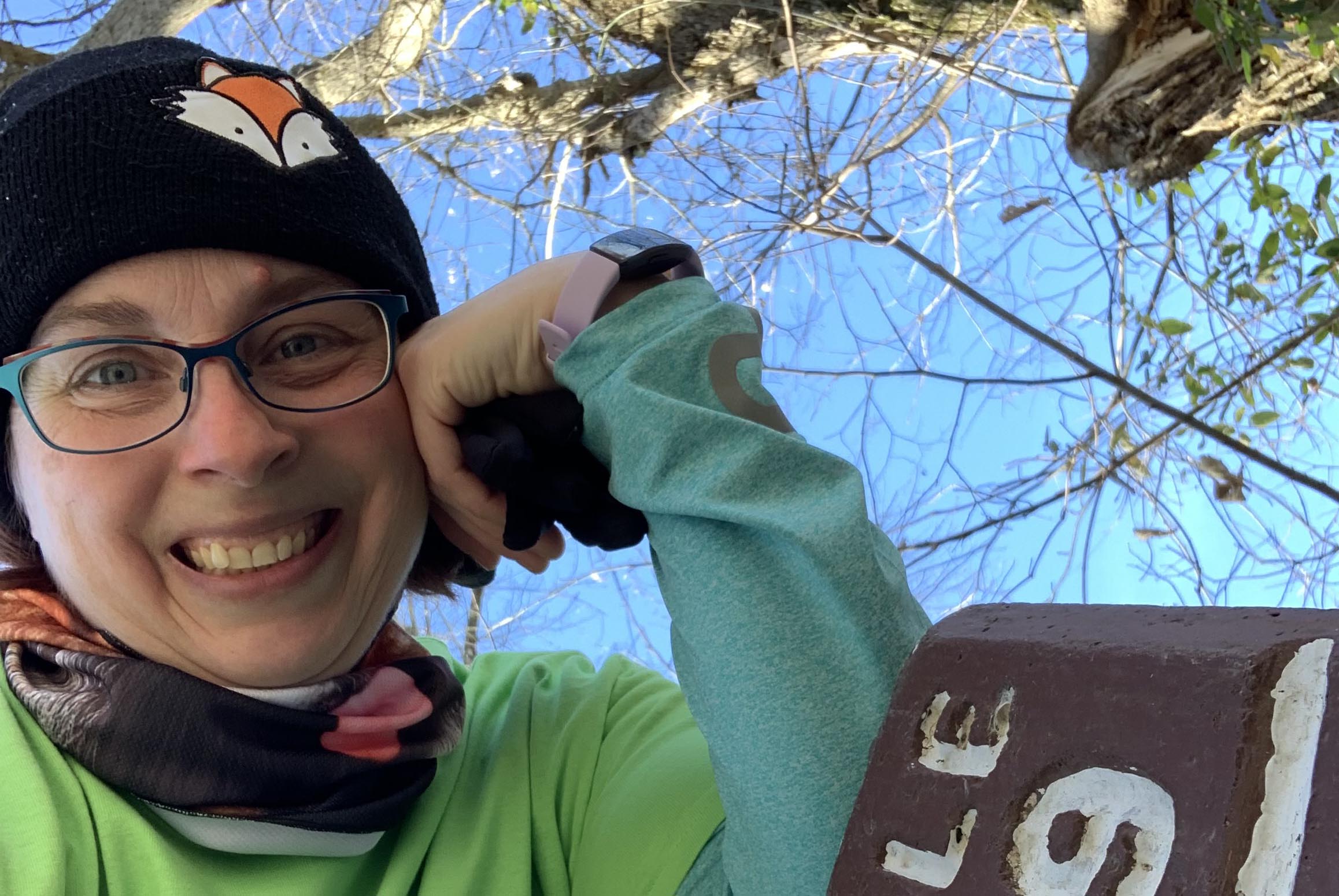
To celebrate the 50th anniversary of the C&O Canal becoming a National Historical Park, we are featuring 50 Canal Stories throughout 2021. Each story will take a look at a person’s relationship with the C&O Canal. Whether an NPS ranger, a volunteer, or a visitor, everyone has a story to tell about the canal! If you want to share your story, submit it to us at the link here, email it to us at [email protected] or post it on your social media feeds with the hashtag #MyCanalStory.
Tammy Giberson, Hiker on the C&O Canal National Historical Park
Tammy Giberson: In February 2017 I had a slip and fall accident that lead to a brain injury. Every doctor who treated me said I should have died. Taking care of the repercussions of that moment led to severe depression and weight gain. I started walking on the Towpath to be somewhere serene and get my mental health back.
In September of 2018, I challenged myself to run a mile. It took until November to achieve that goal. I’m still running! I may be slow but I go! The goal now is to see every single mile marker on the C&O Canal and I’m over halfway to that goal.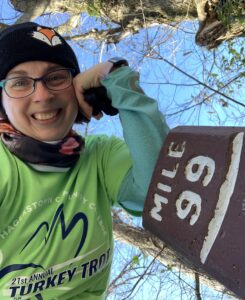
What was once a place of serenity for me is now a place of excitement and thrill. The deer, geese, and squirrels never fail to entertain. The Potomac River always has a story to babble. With 2021 being a cicada year that added an element of focus; bike bells versus cicada screaming.
Hiking 28 miles in a day and a half and rough camping at a hiker-biker camp in May of this year was a vacation dream come true. Everyone I told about it thought I was crazy but I had to prove I could do it. Hearing the pileated woodpecker at 06:00 was a fantastic alarm clock.
I’m now a “regular” at Cushwa Basin and Lockhouse 44. I know the dog walkers, the runners, the storytellers by sight if not by name. I have an alter ego named Zee The Red Fox that I use on Facebook to educate about the importance of the resource that is the National Parks. I volunteer on clean-up days and clean up even on non-volunteer days.
I love this place. It doesn’t matter what mile I’m in. It’s all amazing. It never gets old. I never thought a walk one day would give me a reason to live, but Zero Mile Marker- I’m coming for you!
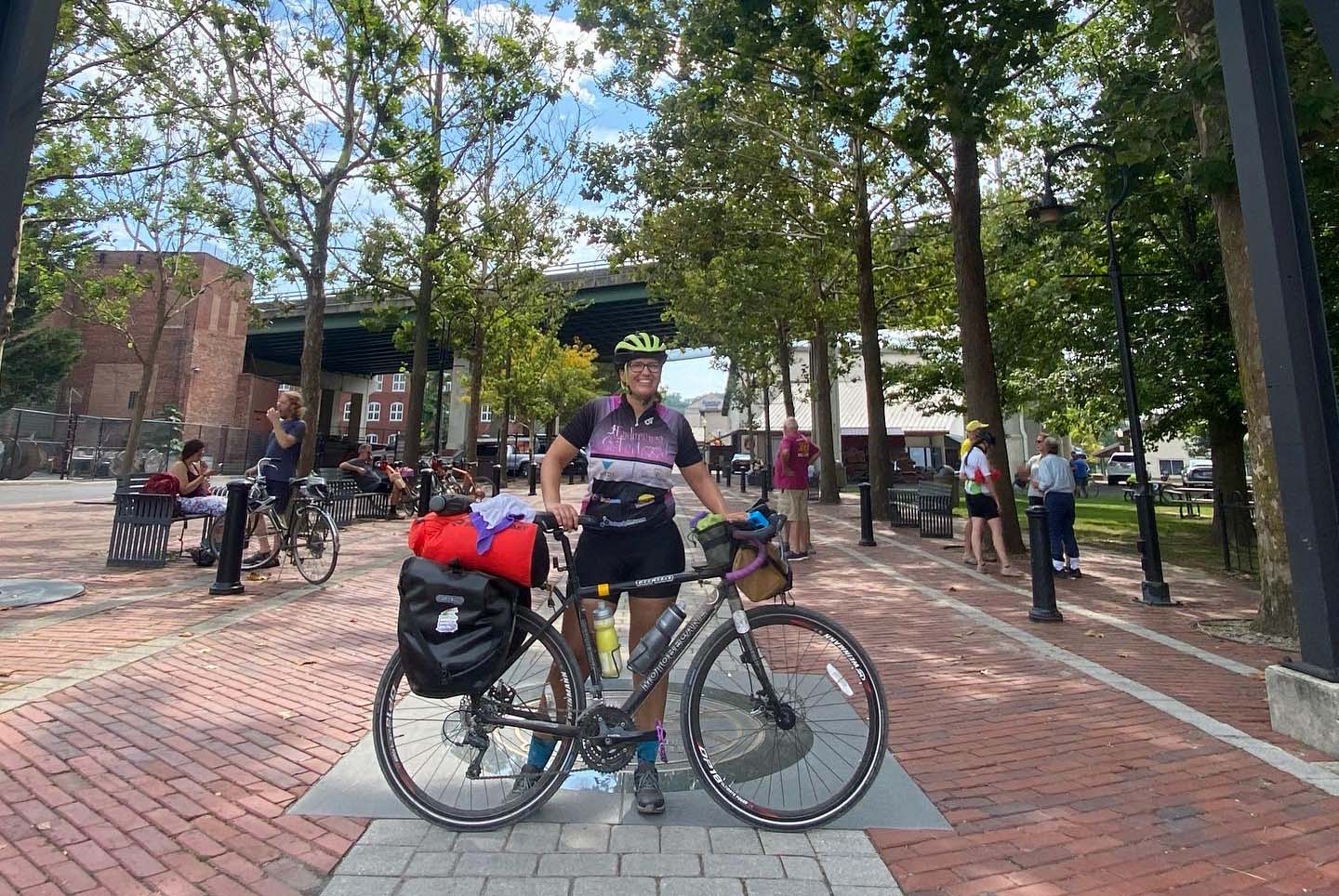
To celebrate the 50th anniversary of the C&O Canal becoming a National Historical Park, we are featuring 50 Canal Stories throughout 2021. Each story will take a look at a person’s relationship with the C&O Canal. Whether an NPS ranger, a volunteer, or a visitor, everyone has a story to tell about the canal! If you want to share your story, submit it to us at the link here, email it to us at [email protected] or post it on your social media feeds with the hashtag #MyCanalStory.
Denise Greer, Bike Rider on the C&O Canal National Historical Park & the Great Allegheny Passage
Denise Greer: In September, a friend and I set out to complete the C&O Canal Towpath and Great Allegheny Passage from Washington DC to Pittsburgh. I had never bike packed this distance. But the way that the C&O and GAP are organized made the ride the best choice for my longest adventure yet.
We picked an eastern end Georgetown start because logistically it made more sense to drive from my Louisville home to Pittsburgh, hop on the Amtrak, and bike back to Pittsburgh. I had no idea that the decision would turn out to be the best way for us to have experienced the C&O.
Beginning east and heading west was like traveling through history. I had the opportunity to experience the trail from the oldest sections to newer ones.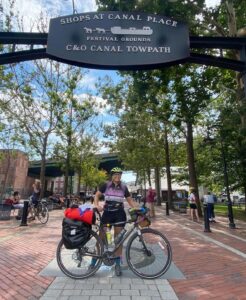
Each pedal stroke took us forward through the history of the canal. It’s incredible that mules and horses would lead vessels up the canal. And every time we arrived at a lockhouse, I imagined the caretakers and families that lived there doing their part to keep the canal system flowing. The next time I visit the C&O, I will stay at one of the lockhouses.
I fell in love with the C&O. With loaded tour bikes we cycled the trail at a leisurely pace, stopping along the way frequently to take in our surroundings. The sights and landscapes around us changed from urban to rural to remote. We stopped in small towns to enjoy their offerings, delighted to go from immersed in nature to relaxing at a coffee shop in a relatively short amount of time. It’s that balance that makes the C&O such an incredible experience.
We mostly camped along the way. Still mornings were some of my favorite moments on the C&O — the misty postcard views and wildlife abound. The hiker/bike campsites are a true treasure that really enhanced our ride. We literally awoke on the trail.
There was such a sense of accomplishment when we arrived at the C&O terminus in Cumberland. While our journey wasn’t over, I felt a sense of loss leaving the unique canal trail. It hugs you between water and land. As I look back on the trip, my fondest memories happened on the C&O.
I often get asked what my favorite part of the trail was and it’s difficult to pinpoint one thing. The entire experience is magical.
You can follow my journey along the C&O at https://youtube.com/
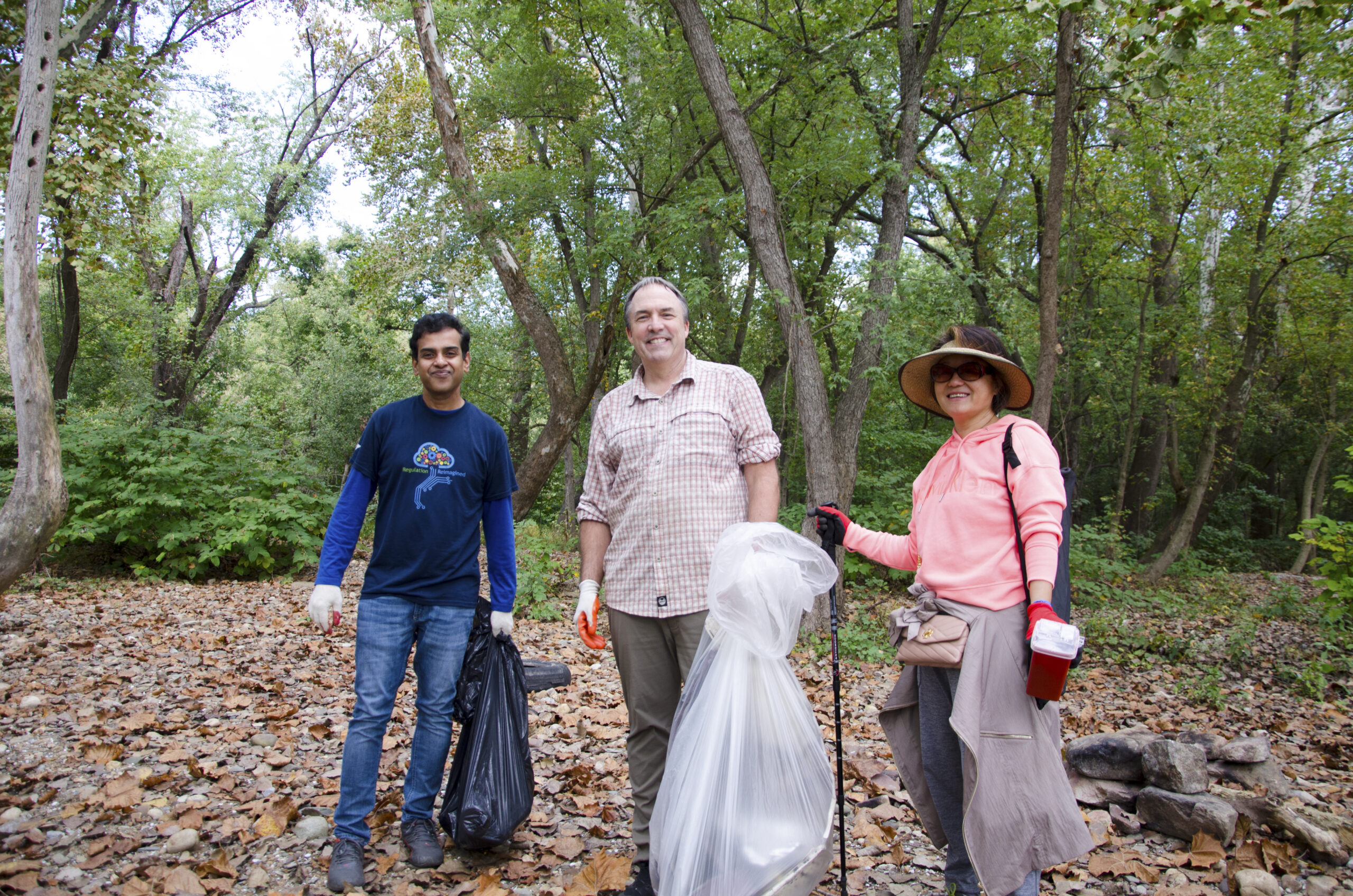

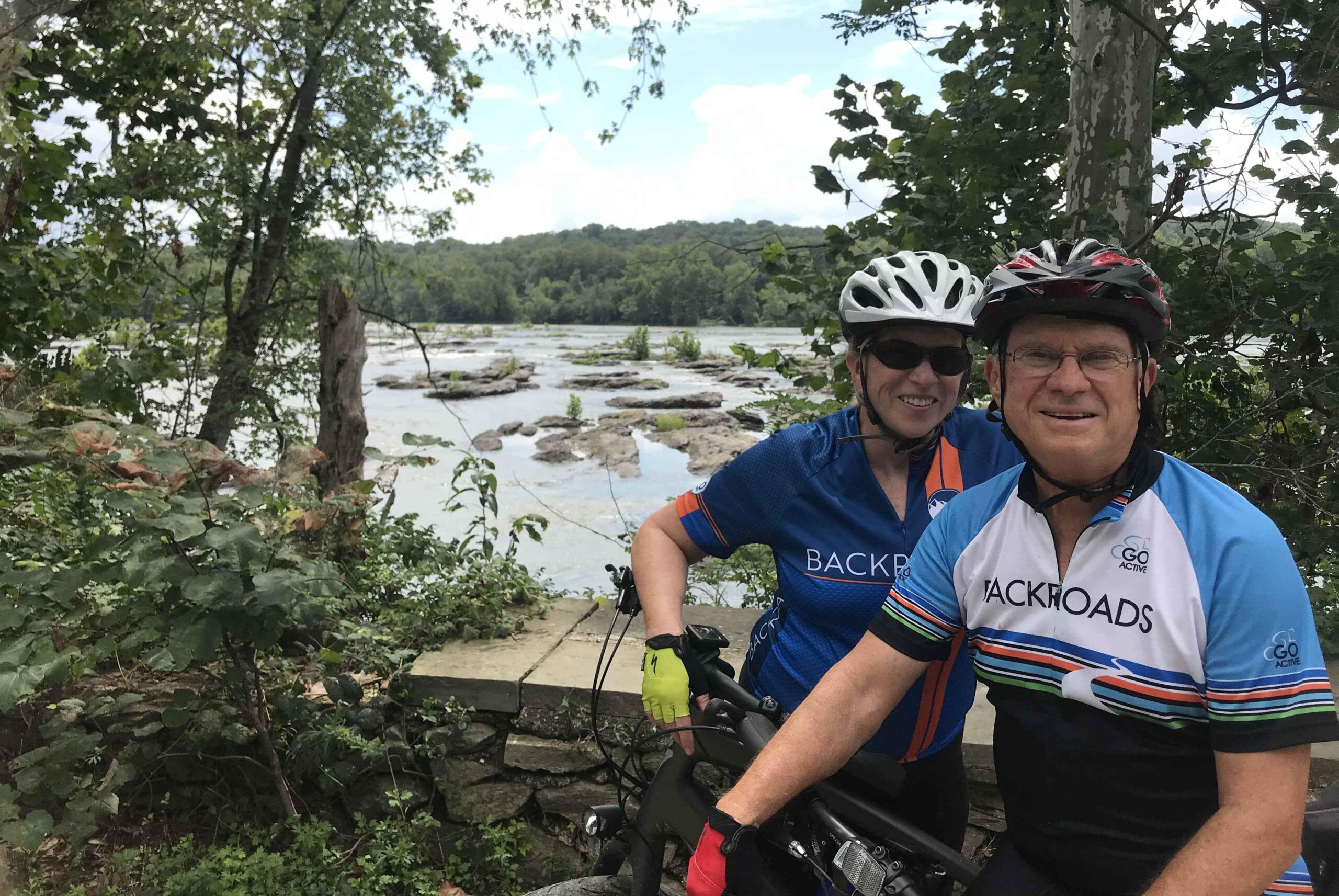
To celebrate the 50th anniversary of the C&O Canal becoming a National Historical Park, we are featuring 50 Canal Stories throughout 2021. Each story will take a look at a person’s relationship with the C&O Canal. Whether an NPS ranger, a volunteer, or a visitor, everyone has a story to tell about the canal! If you want to share your story, submit it to us at the link here, email it to us at [email protected] or post it on your social media feeds with the hashtag #MyCanalStory.
Patricia Mayernik, Bike Rider on the C&O Canal National Historical Park
Patricia Mayernik: For many years we’ve enjoyed extended biking vacations. We’ve traveled in the US and Europe biking on backroads and exploring small towns. With those trips, frankly, we were spoiled. The companies arranged the hotels and meals. Refills for snacks and water were offered along the way. There was even a support van for issues from falls to flats. When the pandemic canceled our trip in 2019, we decided on an alternate activity. Let’s bike the entire 184.5 miles of the C&O Canal Trail. Being less outdoorsy than most people who take on that challenge, we chose to do it in segments. We did the sections we could reach within a day and usually biked around 20 miles round trip.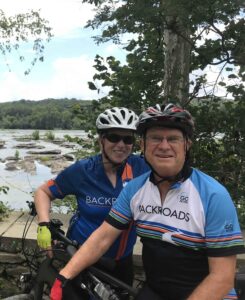
The first lesson was to plan each trip around the parking lots. Additionally, if you plan it right, occasionally there is a restaurant for lunch at the mid-point. Of course, PB&J makes a good alternative. Exploring sections of the trail beyond our usual Brunswick to Harpers Ferry was fascinating. We also enjoyed reading about the history with the book, “Secrets of the C&O Canal.” Eventually, we reached a point where the drives were long and we decided to celebrate our 44th anniversary by completing the northwest segments over a couple of days.
We based our overnight stays at a B&B in Berkley Springs, WVA as it is convenient to the trail. The drive to the trail parking was for our week was about an hour. As a bonus, Berkley Springs has natural hot springs for soaks and lots of options for a massage.
Day one found us on the Western Maryland Rail Trail for the “out” with plans to use the C&O for the “back.” The early arrival of a late afternoon thunderstorm altered our day and we decided to turn back short of our goal. We arrived drenched and muddy at our B&B. Parking our shoes on the porch, our next priority was to take a shower and to rinse our bike clothes in the sink.
On day two we had even more challenges. There were plenty of puddles to dodge. The storm had also downed a few trees across the path requiring us to lift our bikes over their trunks. We persevered until we reached the entrance to the Paw Paw Tunnel. The next important lesson was to check the trail website for issues. If I had I would have learned that the south-eastern approach to the tunnel was closed for repairs. As we were just a short distance from our lunch break, we decided to take the detour, not appreciating how steep or long it would be. Pushing our bikes over the small mountain was frustrating and fatiguing. The problems compounded when I fell and scraped up my knees and elbows. As we downed our much needed lunch in Paw Paw, we called a taxi for a lift back to our car. We were willing to lock the bikes and drive to pick them up, but miraculously the driver had a bike rack on his mini-van. Clearly we weren’t the first in the area to need a lift.
Day three was the final coup de grace for our goal of reaching Cumberland later in the week. We set out towards Old Town from the Paw Paw Tunnel trailhead on the still muddy trail. About halfway to our lunch break, Bob’s bike got a flat. Foolishly we had no repair kit, and that was another important lesson. He insisted he could walk it back to the car. Exhausted, we drove back to Berkley Springs and enjoyed a soak and massage. Over lunch, we agreed to postpone the last segments and headed home early.
Many lessons were learned in those three days. Subsequently, we returned for clear skies and a flawless two day ride with an overnight in Cumberland to complete our goal. Our ability to laugh at the hardships and persevere for three days made an otherwise challenging trip a fun memory. I think we’ll make it to our 45th Anniversary.
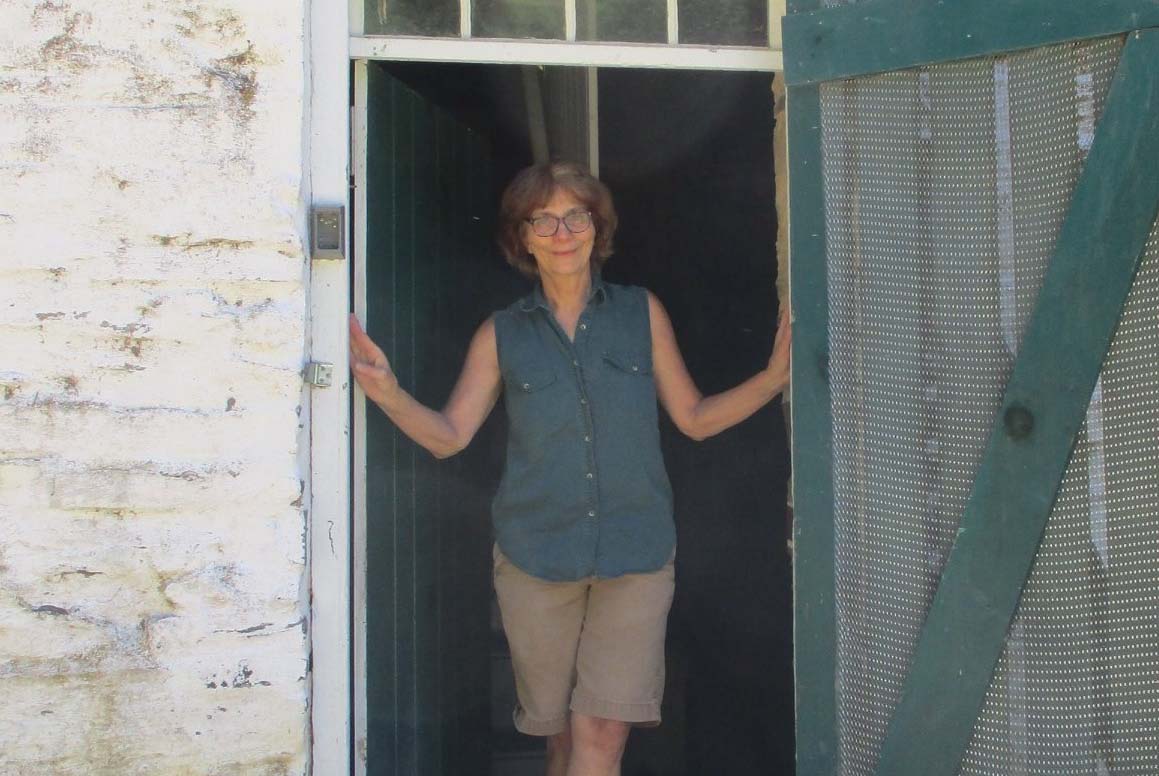
To celebrate the 50th anniversary of the C&O Canal becoming a National Historical Park, we are featuring 50 Canal Stories throughout 2021. Each story will take a look at a person’s relationship with the C&O Canal. Whether an NPS ranger, a volunteer, or a visitor, everyone has a story to tell about the canal! If you want to share your story, submit it to us at the link here, email it to us at [email protected] or post it on your social media feeds with the hashtag #MyCanalStory.
Elaine Stonebraker, Overnight Guest at C&O Canal Trust Lockhouses
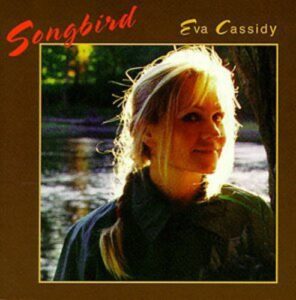
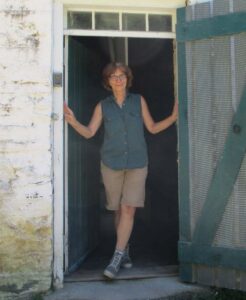 With the exception of the newest one, I have stayed in, and loved, every one of the available Lockouses. Lockhouse 49, known locally as the Taylor House, is my favorite and may well merit a fifth visit. Four Locks was once a thriving community. When Eva and I were caught in a rainstorm there, we’d have given anything to be able to sit on that porch in those big rockers!
With the exception of the newest one, I have stayed in, and loved, every one of the available Lockouses. Lockhouse 49, known locally as the Taylor House, is my favorite and may well merit a fifth visit. Four Locks was once a thriving community. When Eva and I were caught in a rainstorm there, we’d have given anything to be able to sit on that porch in those big rockers!
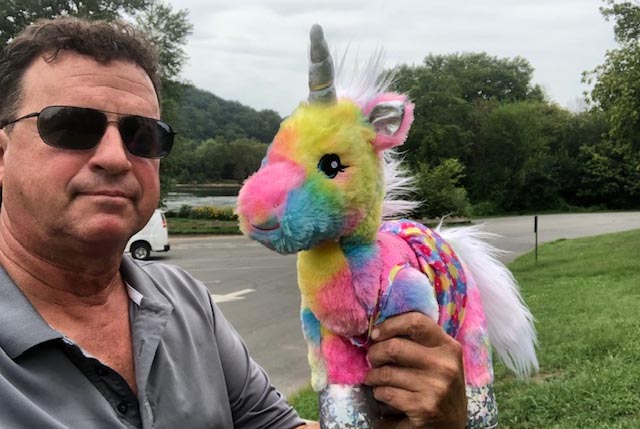
To celebrate the 50th anniversary of the C&O Canal becoming a National Historical Park, we are featuring 50 Canal Stories throughout 2021. Each story will take a look at a person’s relationship with the C&O Canal. Whether an NPS ranger, a volunteer, or a visitor, everyone has a story to tell about the canal! If you want to share your story, submit it to us at the link here, email it to us at [email protected] or post it on your social media feeds with the hashtag #MyCanalStory.
Craig Griffin, Volunteer Canal Steward
Craig Griffin: Trash-er-Cise! That is my hobby, picking up trash while getting exercise at the same time. I do this many places but Point of Rocks Boat Ramp in Maryland is my favorite place to trashercise on the C&O canal. Hello, I’m Craig Griffin, a 61 year old retired guy who lives in Herndon, Virginia. I adopted the area about 10 years ago. I like to train watch, fish, and kayak so this is an ideal area for me to volunteer. While my daughter and wife help only on occasion, I try to visit the park at least once a month to remove litter, cut back branches, and move fallen tree limbs.
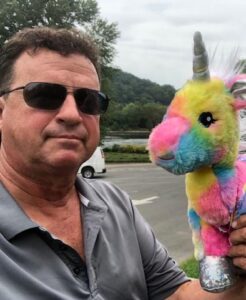
Lastly, thank you to all the volunteers and staff, many of whom I have met over the years. Together we make the park a better place for plants, animals and humans.
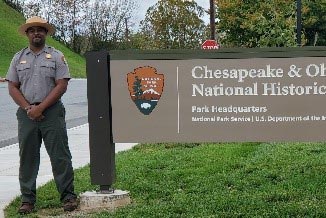
To celebrate the 50th anniversary of the C&O Canal becoming a National Historical Park, we are featuring 50 Canal Stories throughout 2021. Each story will take a look at a person’s relationship with the C&O Canal. Whether an NPS ranger, a volunteer, or a visitor, everyone has a story to tell about the canal! If you want to share your story, submit it to us at the link here, email it to us at [email protected] or post it on your social media feeds with the hashtag #MyCanalStory.
Anthony Bates, Partnerships Coordinator at the C&O Canal
C&O Canal Trust: What is your relationship with the C&O Canal?
Anthony Bates: I began working as the parks’ Partnerships Coordinator in Williamsport, MD, Summer 2020. During my time here at the park, I have really enjoyed the virtual meetings. The meetings have offered opportunities to establish working relationships with my co-workers and park partner organizations, that potentially would have taken longer to establish due to time traveling from one resource to the next, and difference of workstations and schedules.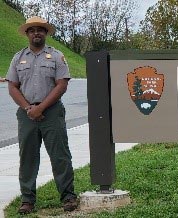
C&O Canal Trust: What is it like working with the Trust and the Park?
Anthony Bates: Working at the C&O Canal National Historical Park has been a joy and I have enjoyed working with the staff and partners since my arrival. In my role as Partnerships Coordinator, I work closely with the C&O Canal Trust, and they have helped with my transition to the area by making me feel welcomed to the park and their team.
C&O Canal Trust: What is your role on a day-to-day basis?
Anthony Bates: In my role as Partnerships Coordinator, I work as a liaison between the park and park partners via developed formal and informal partnerships to help preserve C&O Canal National Historical park resources for current and future generations of park visitors.
C&O Canal Trust: What is your favorite part of working for the Park?
Anthony Bates: Working at the park has allowed for me to work with individuals/organizations to complete a common goal of creating a rememberable first impression for those who have never experienced visiting a National Park. Creating opportunities to welcome new visitors, reminds me of my first experience and how it led me to a career working for the National Park Service. Whether you’re a fan of rural settings and appreciate exotic plants/wildlife that can be viewed from the towpath and nearby trails in Western Maryland and the Eastern Panhandle of WV, or if you’re looking for an urban environment and like the amenities that Washington DC and Montgomery County, MD have to offer, the park allows for a memorable experience.
C&O Canal Trust: What is your favorite thing to do on the canal?
Anthony Bates: Due to COVID-19 I have not had an opportunity to spend a lot of time visiting all the park resources, but I really enjoy being able to see the mountainous landscape when visiting the towpath in Williamsport and surrounding areas in Washington County, MD.
C&O Canal Trust: Do you have a favorite spot?
Anthony Bates: No, not yet.
C&O Canal Trust: What does the canal mean to you?
Anthony Bates: The C&O Canal National Historical Park is a special place that offers different backgrounds an opportunity to come together and experience nature and its surroundings.
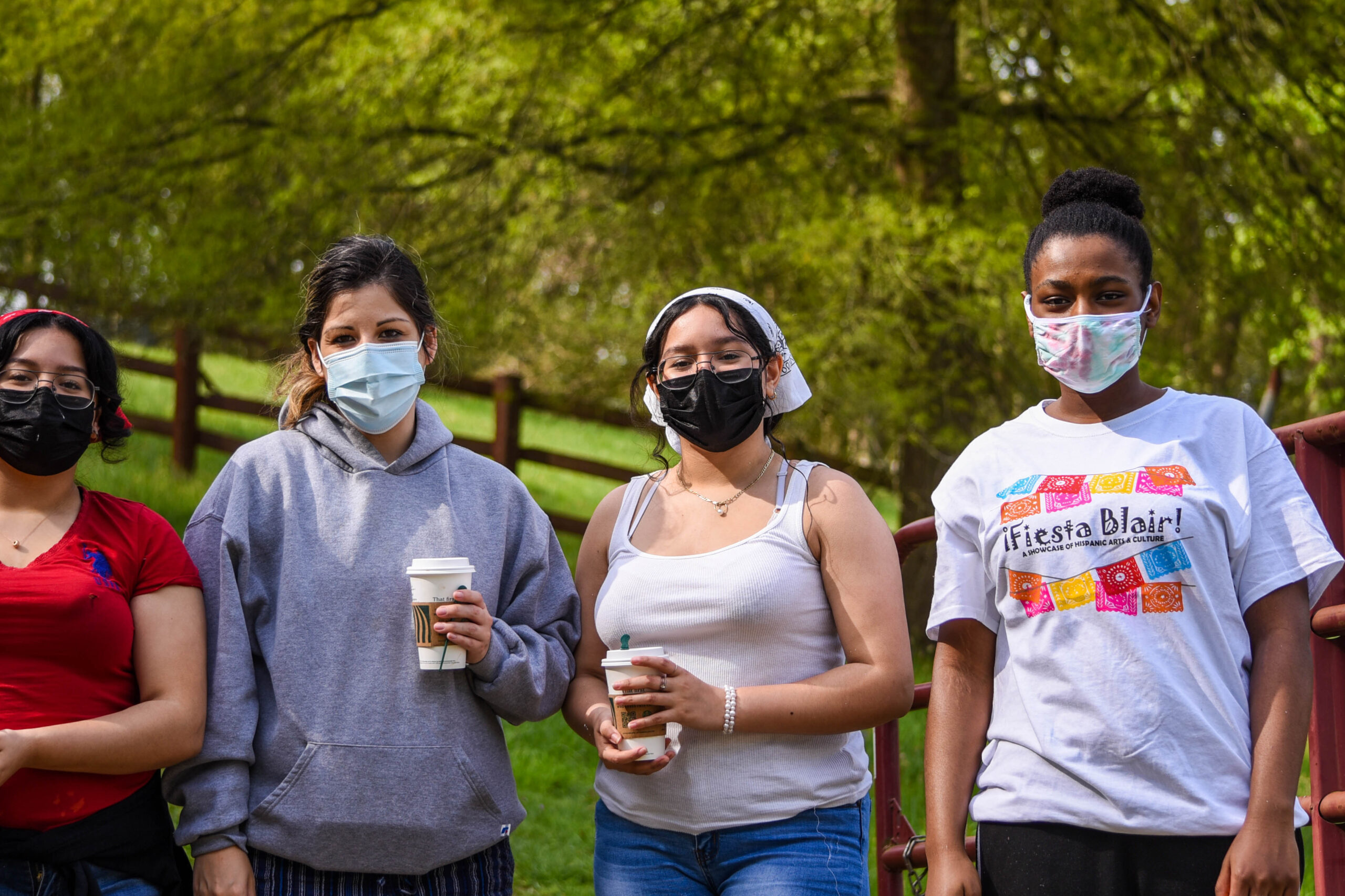
Great Falls Canal Community Days by Francis Grant-Suttie
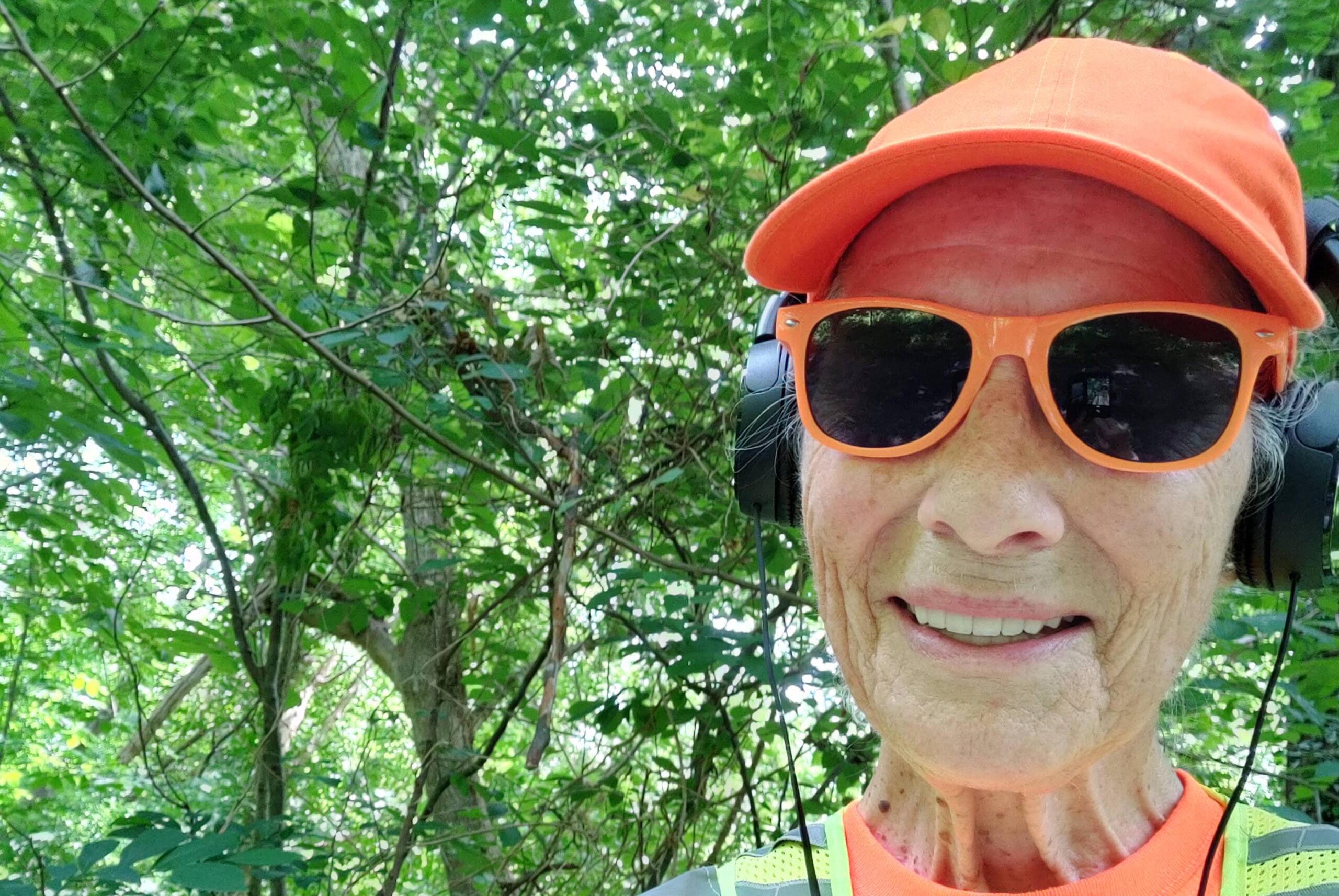
To celebrate the 50th anniversary of the C&O Canal becoming a National Historical Park, we are featuring 50 Canal Stories throughout 2021. Each story will take a look at a person’s relationship with the C&O Canal. Whether an NPS ranger, a volunteer, or a visitor, everyone has a story to tell about the canal! If you want to share your story, submit it to us at the link here, email it to us at [email protected] or post it on your social media feeds with the hashtag #MyCanalStory.
Lorna Hainesworth, Bikerider & Supporter of the C&O Canal NPS
My C&O Canal Towpath Story
By Lorna Hainesworth
When COVID arrived in early March 2020, I found myself looking at a completely empty calendar. Gone were all the trips, tours, meetings, lectures and conferences I had planned to attend. Not one to remain idle for very long, I launched into some badly needed projects around the house. I cleaned out the shed and the basement, which resulted in three trips to the acceptance facility. Then I set my sights on the closets. After clearing out all the unnecessary stuff, which either went to donation centers (after these reopened) or was put in the trash, I stated in on the windows and got all of them sparkling clean. I have three vehicles so my next project was to give each of them a thorough cleaning. By then I had come to the middle of April so I gave the house an extremely detailed cleaning, but I ask, “How much cleaning can one do?” It looked like I had run out of cleaning projects. 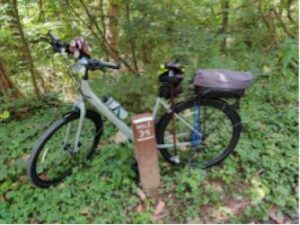
I had read a minimal number of articles on how to survive the pandemic and several of these encouraged people to get outside, enjoy nature and go to recreation areas so long as social distancing could be maintained. I was struck by a brilliant thought, “I’ll buy a bicycle.” Truth be told, I was not the only one to have had this brilliant idea. By the time I was at the bike shop negotiating to get one that fit all of my specifications, the shop along with every other bike shop was experiencing difficulty in getting bikes in stock–seemed like everyone wanted one. I finally had to settle for a bike that had all the features I wanted, but was a small sized frame. No matter, by late May I was out on the trails. Getting a bike had taken almost four weeks.
I am extremely fortunate that I live a relatively short distance from several trails as I had promised myself that I would ride trails exclusively and not risk riding on roads. Besides most trails are relatively flat and do not have the road debris that can cause a flat. Among the trails to which I have easy access are the Baltimore and Annapolis, the Northern Central Railway (Torrey C. Brown), the York County Heritage, the Great Allegheny Passage, the Washington and Old Dominion, Indian Head, Sligo Creek, Western Maryland just to name some of them, but the greatest of them all is the C&O Canal Towpath.
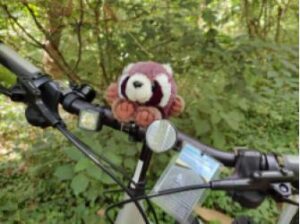 During 2020, I would ride segments of a trail or perhaps an entire trail. As I ride alone, that means going a certain distance and then returning. I started riding 15-16 miles on each trip, but soon found myself doing 38-40 miles along the various trails including the C&O. As I continued to ride, I kept a log of my trips. I also was overjoyed to learn that when I was riding, I was pain-free. At any other time, my right hip and lower back ache due to a bad hip replacement operation.
During 2020, I would ride segments of a trail or perhaps an entire trail. As I ride alone, that means going a certain distance and then returning. I started riding 15-16 miles on each trip, but soon found myself doing 38-40 miles along the various trails including the C&O. As I continued to ride, I kept a log of my trips. I also was overjoyed to learn that when I was riding, I was pain-free. At any other time, my right hip and lower back ache due to a bad hip replacement operation.
I continued doing segments of the C&O until one day I realized I had biked the entire towpath! No wait. I had biked the entire towpath twice, going back and forth on each segment! This is from a woman who turned 77 in June 2020. I was so pleased with myself that I sent my bicycle log to everyone I know. By the end of 2020, I had done 1000.7 miles. In October I had been able to get another bike that was a medium-sized frame, which fitted me much better. 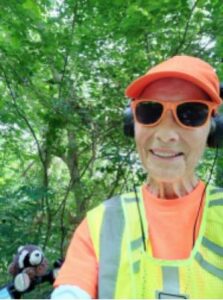
At the start of 2021, I knew I was going to continue biking, but I also realized how much pleasure, excitement and fun the C&O Canal Towpath had given me. I simply had to do something to ensure that the towpath would continue to be there for me. I was not being altruistic, or generous, or unselfish. In fact I was being very selfish. I need the towpath so I had to help. I started by joining the William O. Douglas Society at the Explorer Level, then I took the TowpathGo Challenge and finally became a supporter for the Picnic in the Park. I was delighted to find I was just in time to celebrate the C&O Canal National Historical Park’s 50 year anniversary. I have continued to ride the C&O Towpath and will continue to contribute monetary support so the towpath will be there for me as I long as I’m here for it. BTW that’s my traveling companion Rocky Raccoon.
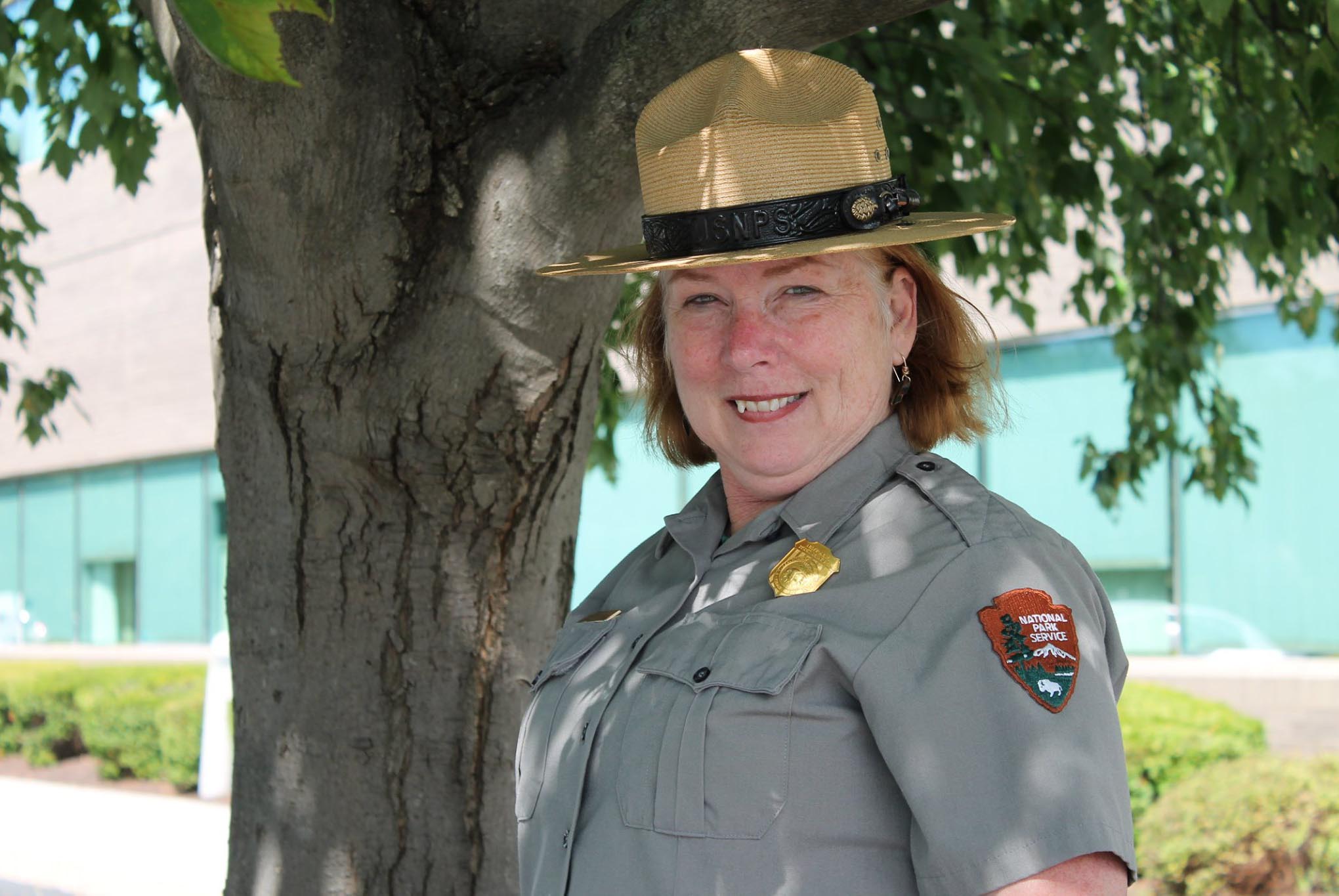
To celebrate the 50th anniversary of the C&O Canal becoming a National Historical Park, we are featuring 50 Canal Stories throughout 2021. Each story will take a look at a person’s relationship with the C&O Canal. Whether an NPS ranger, a volunteer, or a visitor, everyone has a story to tell about the canal! If you want to share your story, submit it to us at the link here, email it to us at [email protected] or post it on your social media feeds with the hashtag #MyCanalStory.
Catherine Bragaw, Former Chief of Interpretation
C&O Canal Trust: What is your relationship / history with the C&O Canal?
Catherine: I began my career with the C&O in 2013 as a Supervisory Park Ranger. I was fortunate for work in both districts before taking the position as Chief of Interpretation, Education and Volunteers. I left in 2019 for a new position with the NPS, but will always be in love with the Canal and continue to be a member of the C&O Canal Association
C&O Canal Trust: When did you first learn of the C&O Canal?
Catherine: I grew up in Frederick County so the canal has always been a part of my life. When I took my first position at Harpers Ferry NHP, I studied and interpreted the canal story because it was so intertwined to the narratives of Harpers Ferry. I grew in my understanding of the canal’s rich history and its significant place in in the early days of the Republic and the Washington DC story. My family had deep roots in DC and generations lived in Georgetown, so it feels like it is deep in the bone.
C&O Canal Trust: You worked as the Park’s Chief of Interpretation. Can you talk about that experience?
Catherine: Coming to the C&O was one of the best decisions I have made in my career. My colleagues there were and still are some of the best and brightest in the park service. The canal is also fortunate to have the devoted work of an amazing group of volunteers, partners, and Canal Classroom Corp teachers. I learned so much from so many. The work is good, broad and intense – it is so complex! One of the top ten most visited park sites in the country, the C&O is rich in cultural and natural resources and touches so many communities. It is no wonder that the C&O Canal has been a proving ground for so many superintendents across the park service. 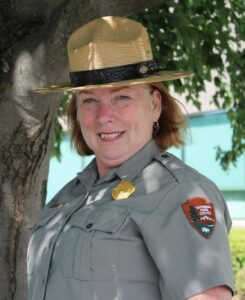
C&O Canal Trust: What is one thing that you think first-time visitors to the Park would find the most interesting?
Catherine: There is so much of our history that is imbedded in the Big Ditch – beginning with George Washington who dreamed the dream. John Quincy Adams would describe the C&O Canal project as a world wonder. One of the first national projects, it was an amazing feat, despite the struggles. Here is the story of the immigrant, the story of labor, the story of human ingenuity, the story of a nation divided, the story of movement, the story of the river, the story of the underground RR – these only a few of many. One of the hardest challenges is which story to tell and sometimes the story of the beauty of nature found along the towpath is what someone may seek the most.
C&O Canal Trust: Do you have a favorite memory of the Park or working for the Park?
Catherine: Honestly, I loved it all. I loved our staff retreats and trainings in the park, loved watching the kids learn and have fun, I loved our mules, the Mercer rising in the lock, taking the hike over the tunnel, the day we opened a new Track Trail, staying up late to see Hollie Lynch win the National Freeman award, our park picnics, Park after Dark, Canal Pride days, the Swains lockhouse/canal quarters project, the African- American CCC wayside project, the Civil War program that Ben Helwig and I presented, Steve Dean talking about culverts – so many fav memories. If you ask me tomorrow, I might share a complete different set of favorite memories
C&O Canal Trust: You also attended the Canal Conference this year. Can you talk about that experience and what you enjoyed most about participating in it?
Catherine: I loved coming back home for the World Canal Conference. It was delightful to spend time with canallers again. I was so impressed with the work the Canal Association did to ensure an excellent conference despite the challenges of the pandemic. Most of my volunteering was on the bus trips with my old friend, Barbara Sheridan while we shared and learned from our old and new friends. The World Canal Conference offers opportunities to explore the interconnectedness of canals across the human experience. The conference is a space to share old and new ideas; a place where water as a global universal excites the continued discussion and exploration of reimagining these human-made waterways.
C&O Canal Trust: What is your favorite place or section of the C&O Canal?
Catherine: Every time I am asked this question, I answer it differently because I love so many places – Cumberland where my mother’s family lived for so many years, the stillness of Oldtown and the dragonflies (thank you Steve), the roar of the falls in Potomac, the places where the African-American CCC repaired and rebuilt, the graves to the Irish, the canal house at 7 locks in the snow, the glimpse of yesterday in Georgetown, the restored aqueduct at Williamsport, the bike path at Shepherdstown – so many keeping memories.
C&O Canal Trust: Finally, what does the canal mean to you?
Catherine: The canal will always be home to me – a place of refuge, sweet memory, and inspiration.
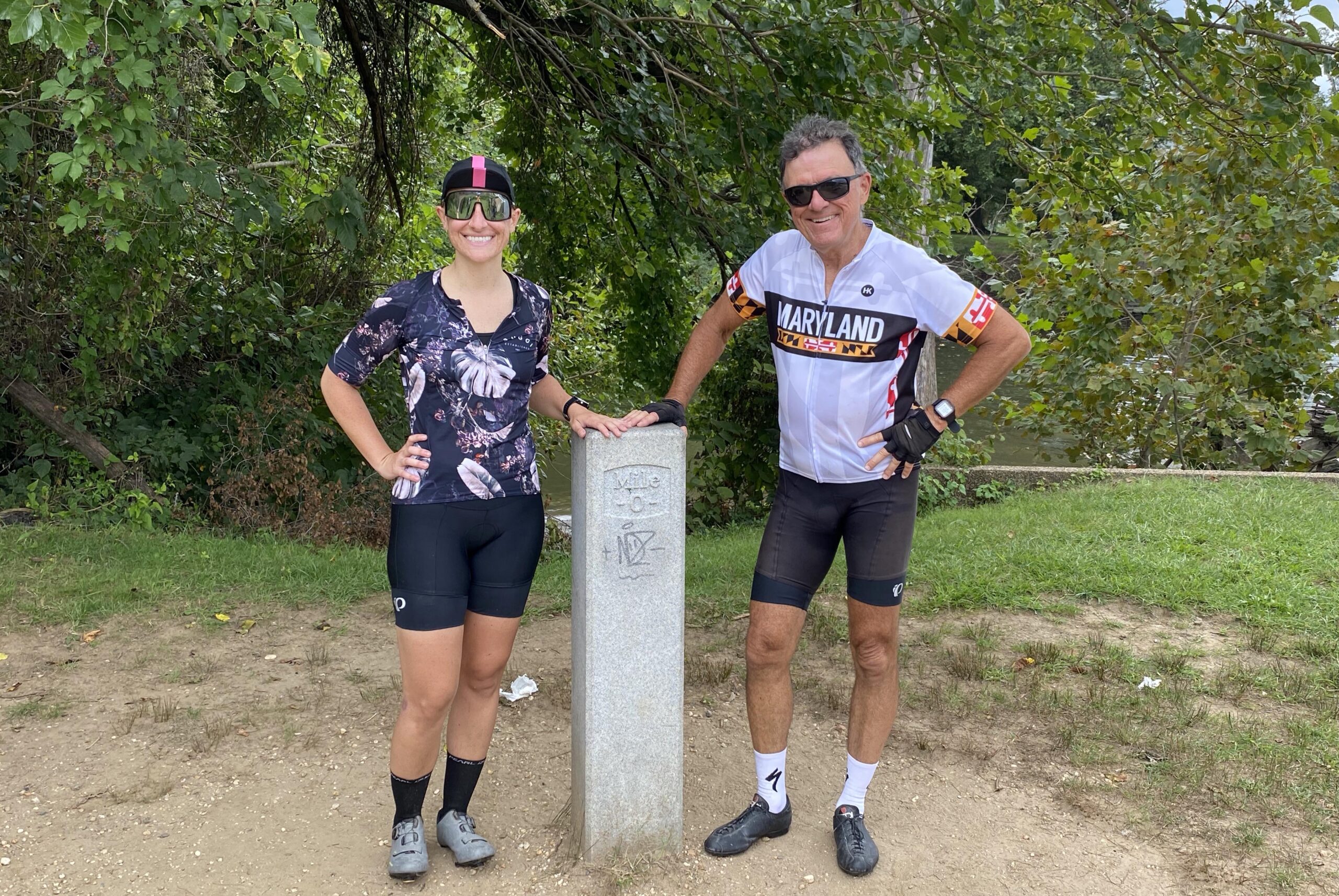
To celebrate the 50th anniversary of the C&O Canal becoming a National Historical Park, we are featuring 50 Canal Stories throughout 2021. Each story will take a look at a person’s relationship with the C&O Canal. Whether an NPS ranger, a volunteer, or a visitor, everyone has a story to tell about the canal! If you want to share your story, submit it to us at the link here, email it to us at [email protected] or post it on your social media feeds with the hashtag #MyCanalStory.
Bill and Leslie Brettschneider, Bikers on the C&O Canal
A daughter, her dad and the Canal
“For your 70th birthday, I’d like to ride a Century with you.” My daughter’s comment set in motion a series of adventures that most recently included our journey on the C&O Canal towpath from Cumberland to Georgetown. Already an accomplished runner, Leslie had decided the best way to commemorate my first 7 decades was to join me in my lifelong pursuit. What began as a 100-mile ride in 2020, led to a 125-mile ride in early 2021 then followed by our GAP/C&O trek this September. We launched in Pittsburgh, traveled the GAP to Cumberland and 6 days from the start landed at Mile 0 in Georgetown. What follows are some insights and impressions gleaned from our 3 days on the towpath.
At the outset, we capitalized on some excellent guidance received from Aidan Barnes with the C&O Canal Trust. While I had ridden parts of the towpath in 1980, I had done so on a touring bike best suited for asphalt. Aidan’s observations regarding the towpath surface encouraged us to rent gravel bikes better rigged for the conditions we would encounter. While these mounts served well on the GAP, I had no idea how they would better handle the, reported to be, rougher sections of the towpath. Our itinerary would take us from Cumberland to Hancock to Harper’s Ferry to Georgetown – a plan apparently common to many, including a couple from Allentown, PA as you will soon see.
While we had met this couple on the GAP, we then became accustomed to seeing them either along the route or at the end of the day. Upon our arrival in Cumberland, Scott and Jennifer pulled in shortly thereafter. After capturing photos and sharing congratulations, Leslie and I enjoyed our hotel stay in Cumberland in preparation for our start on the towpath. The constant excellent weather ushered us onto the C&O the next morning. At the outset, I was lulled by the riding surface – “How rough can this be?” I wondered? In due time, that query was answered and I came to appreciate the 47 mm tires we were running. 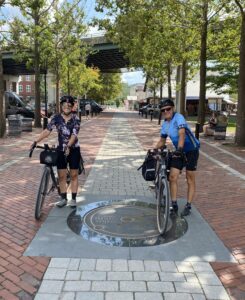
Though I had noted a list of sites and sights to see, I was chagrined to learn we had completely missed the first several aqueducts. I was slow to process that we were riding over them. Note to self – stop riding and gain a vantage point to see the work and craft that went into building these wonderful structures. Alternately watered or overgrown, the footprint of the Canal and the echoes of working locks encouraged us onward. Eager anticipation of the Paw Paw Tunnel was dampened by the prospect of the detour due to the stabilization project underway. Undaunted, we rode through the tunnel as far as we could go and well-appreciated the lights provided with our rental bikes. Talk about dark! The scope and scale of the Tunnel is certainly impressive.
A welcome respite from the vibrations of the trail and the calories consumed was “Bill’s Place” in Little Orleans. Truly a slice of local community and culture, this unique establishment provided not only sustenance but also information on access to the paved Western Maryland Rail Trail (WMRT.) The journey into Hancock was smooth and fast. Our standing joke was – “Who is keeping up with who?” The arrival in Hancock brought us to a wonderful bike shop adjacent to the trail, a comfortable if care-worn AIR-BnB and a welcome meal – where again we greeted our new friends from Allentown.
Our travel from Hancock was facilitated by the continuation of the WMRT and the very welcome re-surfacing of the towpath all the way to Harper’s Ferry. Nonetheless, a massive tree downed across the trail required some lifting/climbing/crawling skills. Williamsport saw us greeting Scott and Jennifer while a later detour found us off the towpath with the return being a mulch-covered downhill where walking was the path of discretion. The reward was travel immediately adjacent to the Potomac River. This was a welcome change from the more tree-lined and isolated sections of the trail.
We pressed on toward lunch only then to be greeted by a 12% grade climb off the towpath and into Shepherdstown, W VA. A tasty meal was had at the Blue Moon Café – where again we greeted Scott and Jennifer who arrived looking like they were overdue for lunch. The improved surface of the towpath saw us promptly in Harper’s Ferry where the stair-climb up to the cross-river walkway was an interesting challenge given the loaded bikes we hauled along. Of course, our excellent Inn for the night was then at the TOP of the Harper’s Ferry hill. Local dinner again found us greeting Scott and Jennifer!
Our final day found us feeling ready to return home, particularly for Leslie who lives in Washington, DC. Lunch at White’s Ferry was well-timed even if a disappointment to see the Ferry no longer in service. It also seemed odd to see a sign that said, “Welcome to Montgomery County.” I couldn’t easily reconcile the peaceful greenery and quiet of the towpath with the hustle-and-bustle of the commercial and developed County with which I was more familiar.
The nicely restored canal, locks, buildings and towpath through Great Falls were well-appreciated and the final miles into Georgetown passed by quickly as the urban surroundings became progressively well-known. And then – surprise! We meet up with Scott and Jennifer near the very end of the ride. Together, the four of us negotiated the circuitous route that would take us to Mile 0 of the C&O Canal.
The hewn-stone portal of the “Tide Lock,” the remnants of the wooden lock gates, the broad expanse of the navigable Potomac all served to capture my attention in a manner for which I was unprepared. “Here is where this all started. Through this spot came and went the commerce of the canal – boats and operators and mules and supplies and . . .”. I believe it was the most captivating moment on the towpath.
Being familiar with DC, Leslie volunteered to guide Scott and Jennifer through the urban landscape to the Washington Monument. We negotiated the streets of the city, crossed Constitution Avenue onto 17th street and turned left on the Monument grounds. It was then that Leslie and I both looked at each other and shared “This seems odd. Familiar . . . yet strange at the same time. We’re back, and we’re changed.”
We had traversed a geography that at times seemed isolated and a bit tedious. We had passed through history from a time long-ago. We had done so on two wheels at a pace well above that of the original canal boats. Yet – at the same time we had enjoyed a connection with fellow travelers, perhaps not unlike the community and camaraderie of the canal boat operators, lock keepers and the many who depended upon this thoroughfare. We had immersed ourselves in travel well below the hectic pace of the Capital Beltway. We had woven a fabric as a daughter, her dad and the Canal.
The Canal is calling. Can you hear it? Your adventure awaits you.
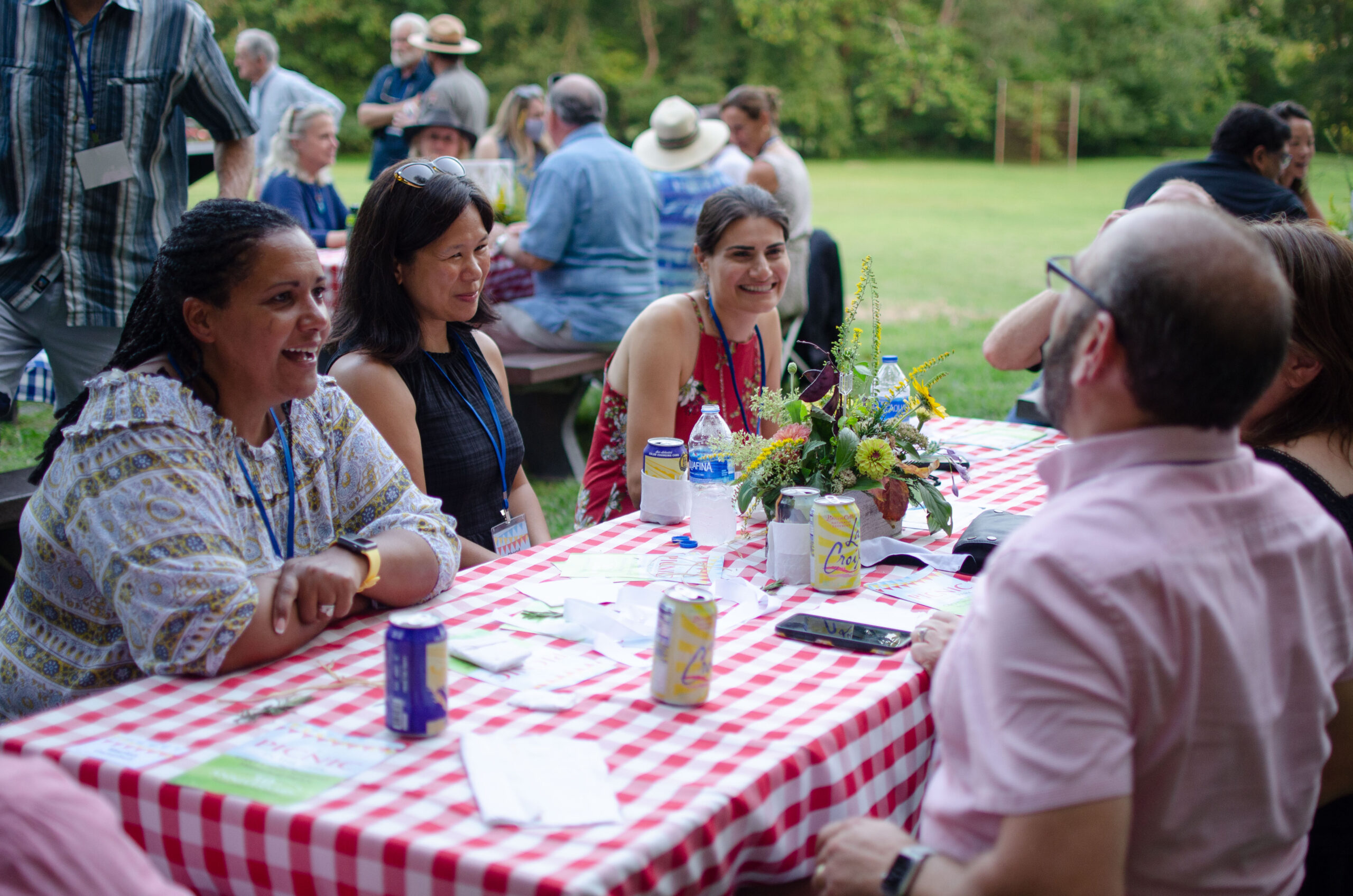
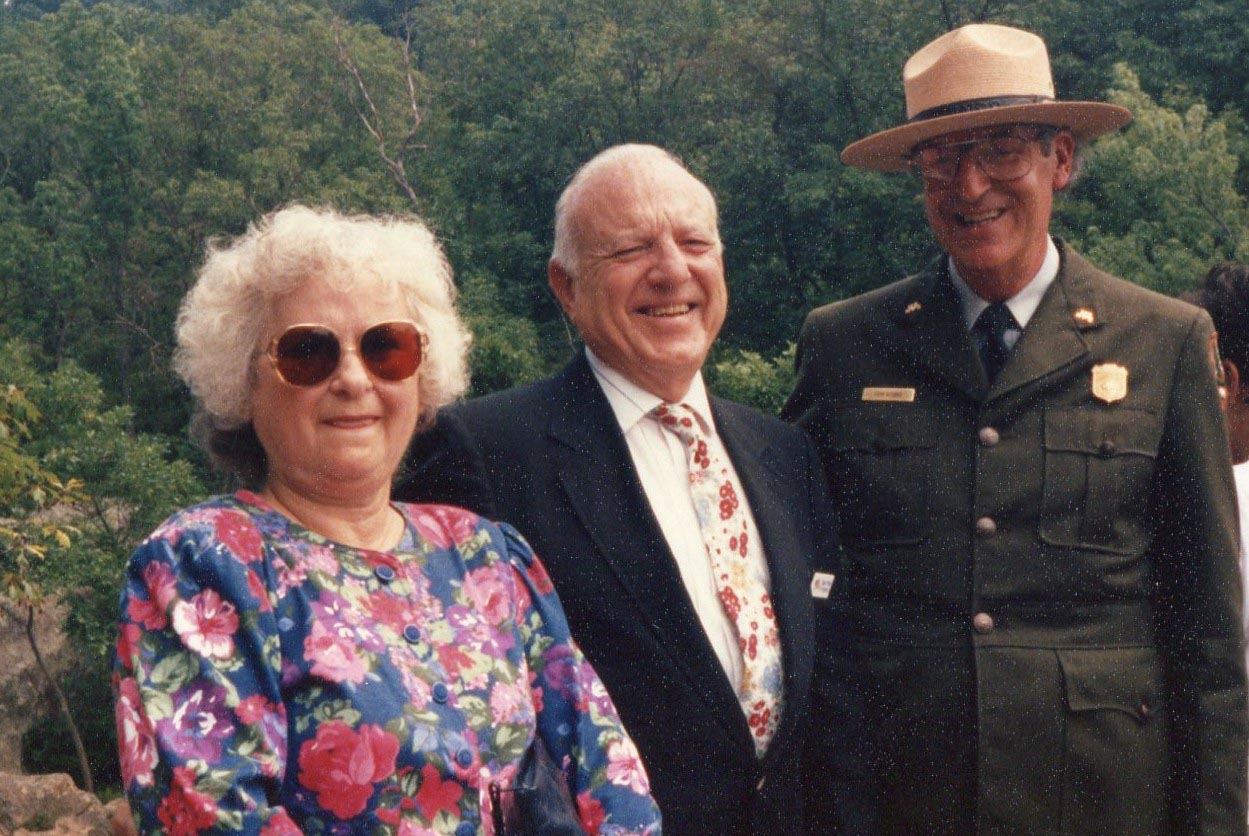
To celebrate the 50th anniversary of the C&O Canal becoming a National Historical Park, we are featuring 50 Canal Stories throughout 2021. Each story will take a look at a person’s relationship with the C&O Canal. Whether an NPS ranger, a volunteer, or a visitor, everyone has a story to tell about the canal! If you want to share your story, submit it to us at the link here, email it to us at [email protected] or post it on your social media feeds with the hashtag #MyCanalStory.
Janine Wilkin, Visitor to the C&O Canal National Historical Park
The C&O Canal Trust bench program allows visitors to the Park to honor their loved ones in a very special way. The benches can be found along the towpath and are installed by volunteers. The Hanna Family details their bench’s story below.
To learn more about the Bench Donation Program, click here.
The Hanna family moved to Rockville, Maryland in 1962. With 7 daughters and a love of the outdoors, trips to the C & O Canal at Great Falls became a family tradition. Annette and the girls would make the picnic and Bill would drive the family station wagon to the park. A hike out to Olmstead Island to view Great Falls was a favorite hike. The wooden bridges to access the Falls were first built over 100 years ago. In 1972 Hurricane Agnes came and destroyed all the bridges cutting off the access to view Great Falls from the Maryland side.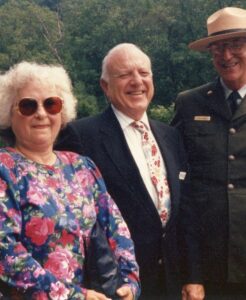
In 1985 Montgomery County Council member William E Hanna Jr. began a crusade to get the bridges rebuilt. This effort would take many years and overcome a tremendous number of obstacles. He would have to call on relationships built over his years as the Mayor of Rockville, President of the Maryland Municipal League, and his years on the County Council to assemble a private/public partnership to tackle the mission.
His efforts included funding from the state, Montgomery County, the federal government, the public and private industry. When the efforts looked like they would be short of the required funds, he enlisted the help of Barry Scher, President of Giant Foods in a public campaign to reach out to the citizens of Montgomery County to help reach the goal.
On July 17, 1992 the bridges were dedicated and reopened.
The Hanna family picked this spot for the bench, at the entrance to the path to Olmstead Island to celebrate the lives of their parents William (Bill) and Annette Hanna, two people who dedicated their lives to public service and fought to bring the joy of nature and Great Falls back to all of us.
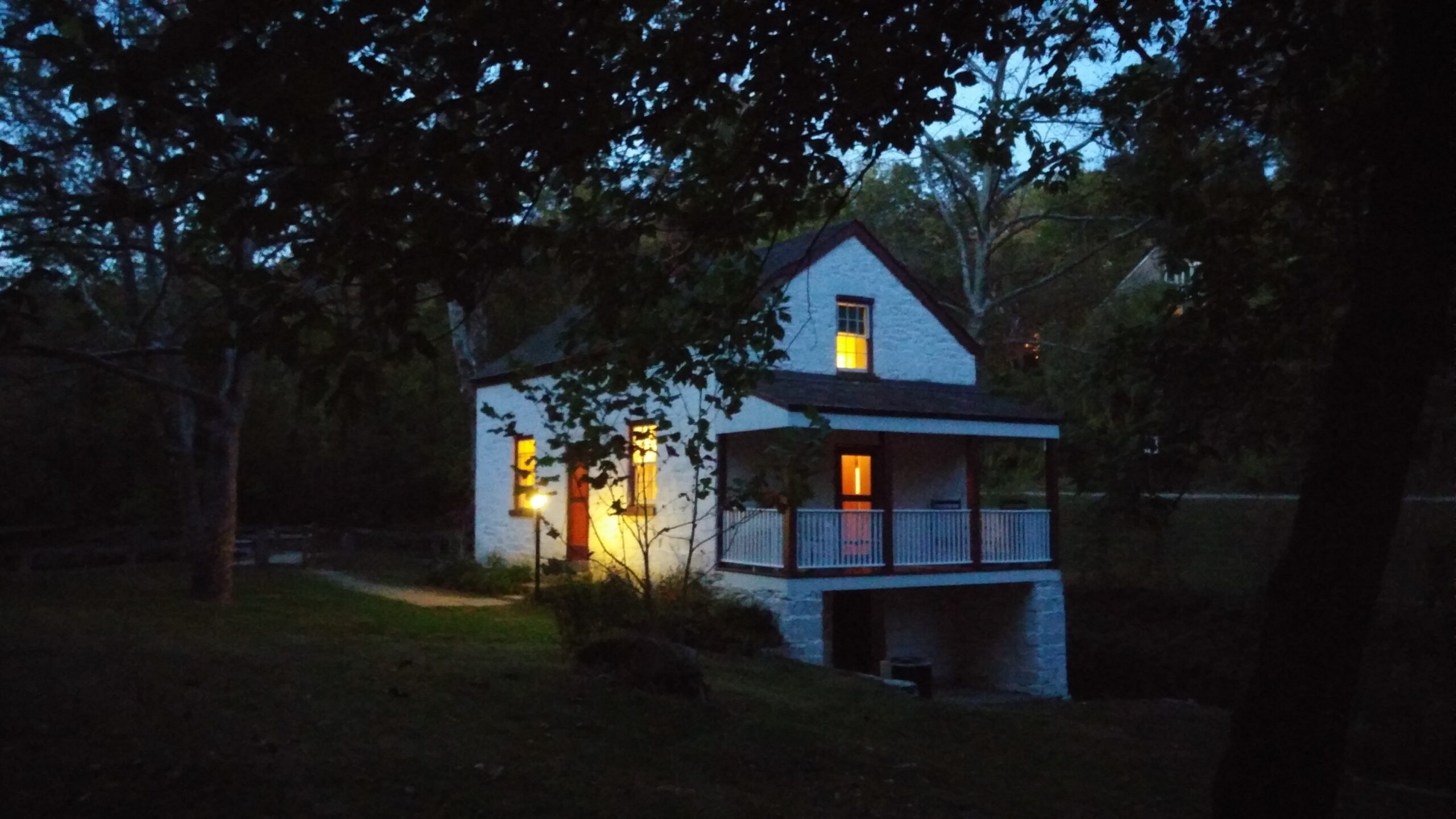
LH 6 at Night by Susie Bruninga
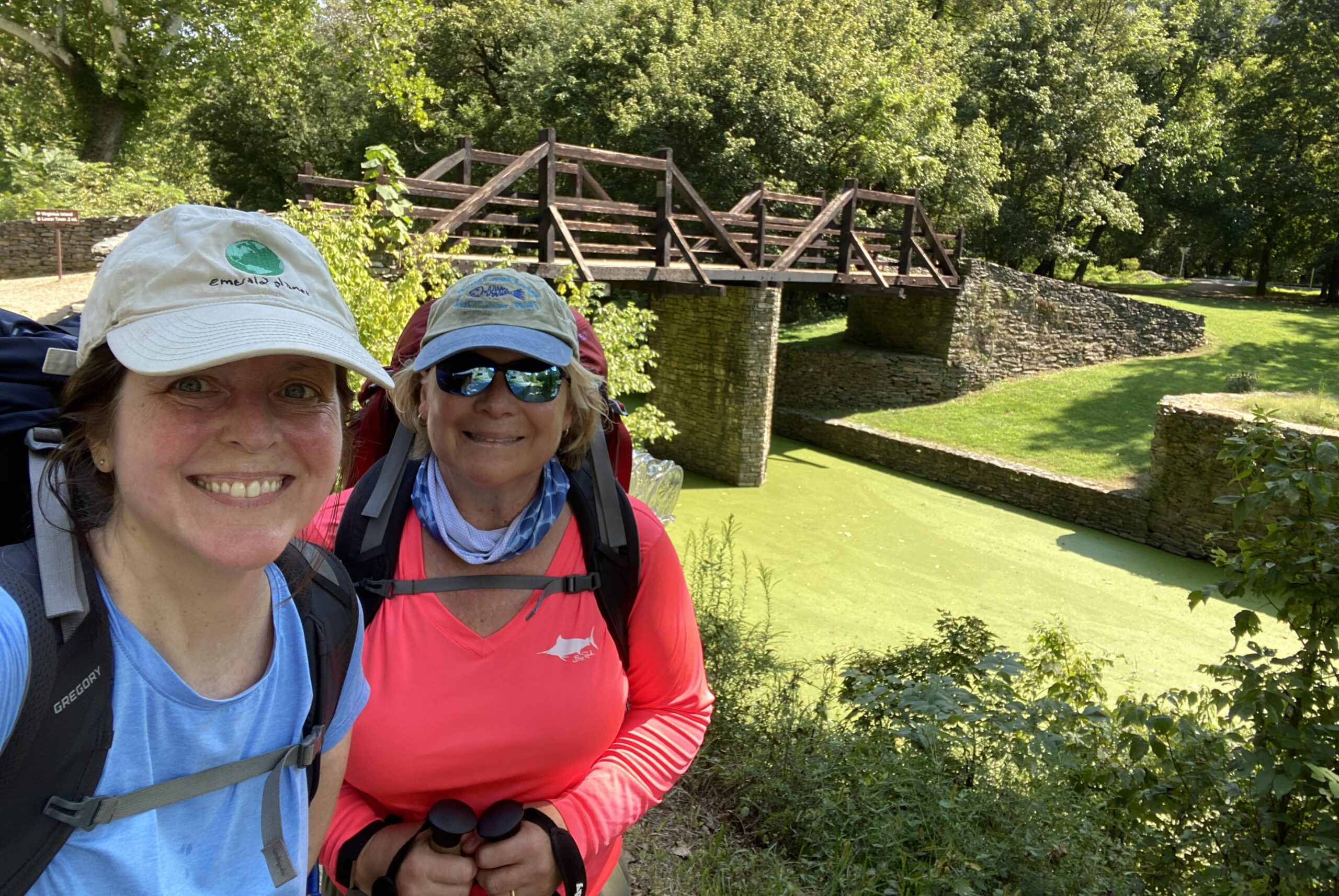
To celebrate the 50th anniversary of the C&O Canal becoming a National Historical Park, we are featuring 50 Canal Stories throughout 2021. Each story will take a look at a person’s relationship with the C&O Canal. Whether an NPS ranger, a volunteer, or a visitor, everyone has a story to tell about the canal! If you want to share your story, submit it to us at the link here, email it to us at [email protected] or post it on your social media feeds with the hashtag #MyCanalStory.
Janine Wilkin, Visitor to the C&O Canal National Historical Park
When I was a kid, my family had a weekend cabin in the Pocono Mountains where my dad helped to instill a love of nature in me through canoeing and fishing adventures. My dad was a plumber and as plumbing humor goes, back at the cabin he liked to cut off the hot water while we were showering, bucketing us immediately with brisk mountain-spring cold. He also was famous for stealthily pocketing a piece of a puzzle we were working on. After my siblings and I had crawled under the table and looked under the couch searching for the last missing piece, he would come over to the table and with a hearty laugh, triumphantly pull it from his pocket and lock it in.
He’s been gone for sixteen years now, and I miss seeing his ornery grin and hearing his full-bellied laugh. He gave me my love of the outdoors and a love of solving puzzles, both on the table, and in life.
When I started walking on the C&O Canal years ago near my home in Arlington, Virginia, it was simply a trail near my house. I’d walked with my friend Heather 3 to 4 mile round-trip segments from Chain Bridge going south to Georgetown and Chain Bridge north towards Great Falls. It was our time to catch up. 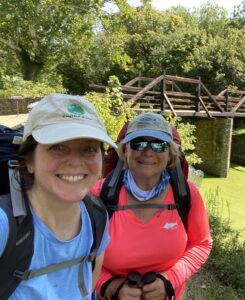
These short hikes were followed by a hike in Harper’s Ferry with my friend Sandy, where we headed south on the canal to Brunswick and stumbled upon a wonderful church-turned cafe called Beans in the Belfry. It was around the time of this hike, Sandy and I hatched the idea of section hiking the whole length from DC to Cumberland, MD. The C&O Canal was a puzzle we wanted to solve, by completing it in its entirety, one piece at a time.
Early on, we both printed off the mile-post marker of the Canal and while this may sound absurd to some, we loved coming home to highlight the segments as we completed them. Edwards Ferry to Seneca Creek. Harper’s Ferry to Shepherdstown. Fifteen Mile-Creek to Paw Paw. And the list goes on.
Along the way, we shared the beauty of the trail with deer, beavers, turtles, bugs, snakes and our girlfriends as they were able to join us. It became walk-talk therapy time, a place to restore in the cradle of nature. We’ve seen the Canal in all seasons, full with color in fall, dense with green in summer, budding with the hopefulness of spring and still and silent in the winter.
As the distance from our homes became further, we stayed at some of the lockhouses. It was enchanting to feel and experience the history at Edwards Ferry (pro-tip, it’s cold in November, but doable!) and at Clear Spring as we ascended narrow stairs to our bunks for the night and heated water for our coffee over old stoves in the morning. Alternatively, we also backpacked and camped several nights trying out several of the hiker-biker sites where the sounds of the running Potomac lulled us to sleep.
We’re teed up to finish the last segment in October, where we will camp at Spring Gap and walk the final 11ish miles to Cumberland. It’s more than a nearby trail now. It’s a piece of my life story that I am so grateful to have shared with friends. Like my dad used to do, I look forward to locking in this last piece.
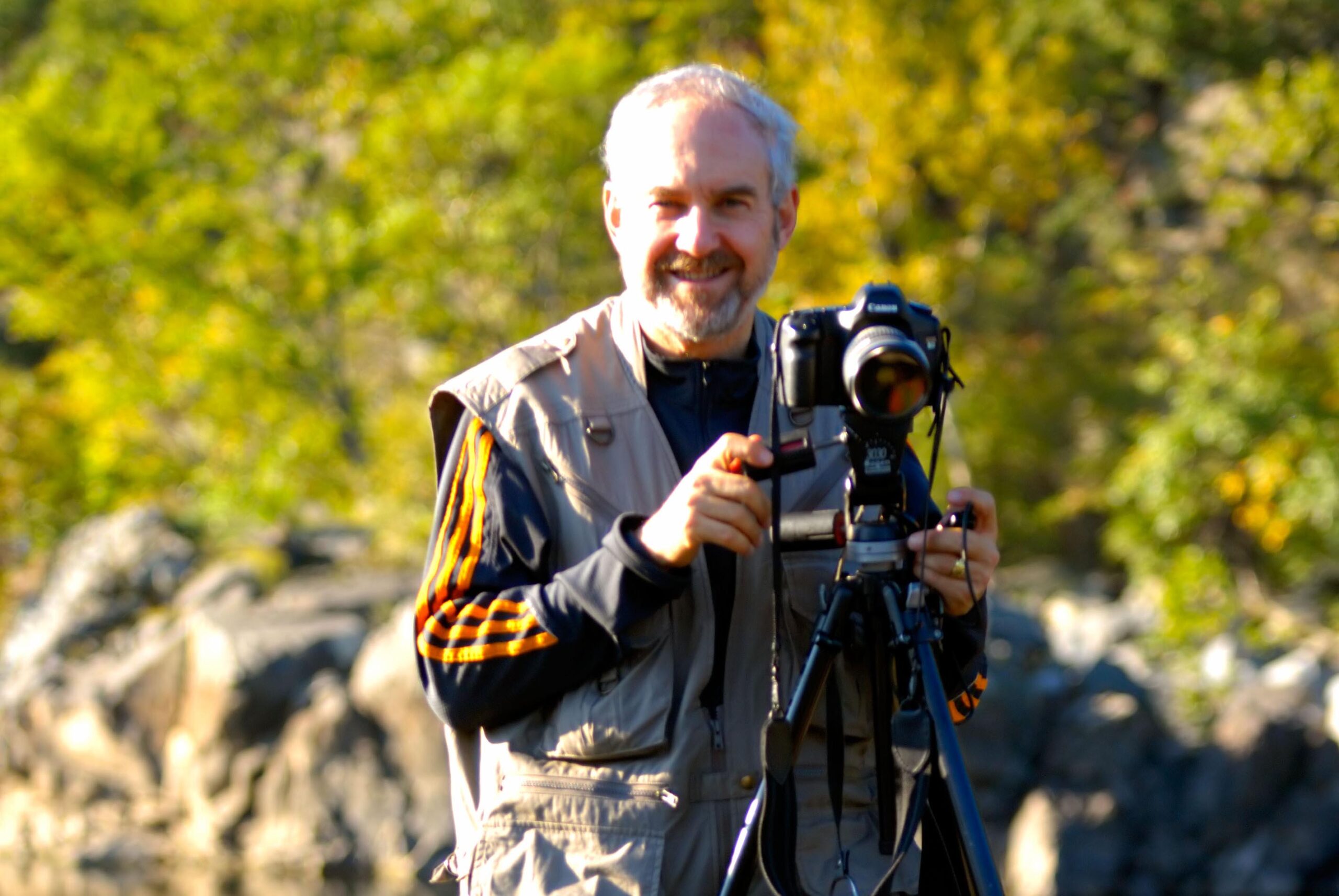
To celebrate the 50th anniversary of the C&O Canal becoming a National Historical Park, we are featuring 50 Canal Stories throughout 2021. Each story will take a look at a person’s relationship with the C&O Canal. Whether an NPS ranger, a volunteer, or a visitor, everyone has a story to tell about the canal! If you want to share your story, submit it to us at the link here, email it to us at [email protected] or post it on your social media feeds with the hashtag #MyCanalStory.
Lee Goodwin, Photographer and Supporter of the C&O Canal Trust
C&O Canal Trust: What is your history / relationship with the C&O Canal?
Lee: I started coming to the Canal more than forty years ago when we moved to a house just a few miles from Great Falls. Since then, I have regularly hiked the towpath and canoed in the canal. But my favorite activity at the Canal is photographing the beautiful landscape, and the wildlife that the Canal attracts. I have been a serious photographer since I was a child, and I feel fortunate to live so close to such a fantastic subject. Every time that I think I may have exhausted the photographic potential of the Canal, the weather will change, or the leaves will turn, and a whole new world of possibilities will open up. Over the years my Canal photographs have been exhibited at the Great Falls Tavern and in exhibits around Maryland, Virginia and the District of Columbia, and sales of my photographs have raised thousands of dollars for the C&O Canal Trust at the Trust’s Park After Dark fundraiser.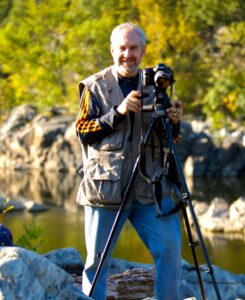
C&O Canal Trust: What is your photography process?
Lee: Like many photographers my age, I learned my craft using a variety of small, medium and large format film cameras, and developing and printing black and white photographs in a traditional darkroom. However, several years ago I was drawn to the creative possibilities offered by digital photography. While I like the detail and the rich tones that I achieved with traditional processes, I appreciate the flexibility offered by the digital medium. The photographs included in this story were taken with a variety of classic and contemporary cameras. Currently, my day-to-day cameras are Nikon Z7 and Fuji X-T3 mirrorless digital cameras.
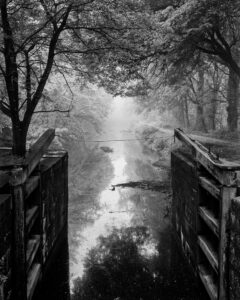
Lock Seven in Fog by Lee Goodwin
C&O Canal Trust: What is your personal favorite photo you have taken on the canal?
Lee: My favorite photo is “Lock 7 in Fog”, which was taken from the foot bridge over Lock 7, looking downstream into a foggy morning. The photo was taken with a Mamiya 7 medium format film camera, and over the years it has been one of my most popular photos. However, while I love the photo, it is also bittersweet for me, because it highlights the changes that have come to the Canal over time. This photo could not be taken today because the National Park Service has had to add braces to stabilize the lock walls.
C&O Canal Trust: What is your favorite thing to do on the canal?
Lee: In addition to my photography, I like to get out and hike on the towpath. Especially during the pandemic, the towpath has been a refuge where I can get out and enjoy the fresh air in relative solitude, without worrying so much about the rest of the world.
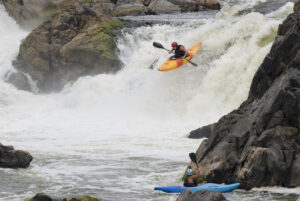
Kayaker Over Great Falls by Lee Goodwin
C&O Canal Trust: Do you have a favorite memory of the Park?
Lee: My favorite memory goes back to when my daughters were young. There used to be canoes for rent at Swains Lock, and I would take the girls out on the canal on weekend mornings (after I had cleared out any spiders lurking in the canoe). They enjoyed being out in nature, and they made a game out of counting the turtles that crawled out to sun themselves on logs and rocks along the canal.
C&O Canal Trust: What is your favorite place or section of the Park?
Lee: I love the two miles between Anglers and the Great Falls Tavern. It has a little bit of everything, and many of my favorite photos were taken in that stretch of the canal. The colors in the widewater section are special in the fall, and Great Falls is particularly spectacular when the river is full in the spring.
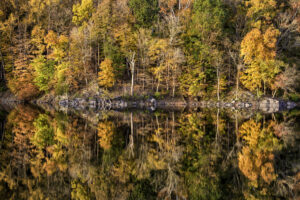
Anglers in Autumn by Lee Goodwin
If you want to see more of my Canal photographs, you can find galleries for the Canal, the Anglers and Widewater section, and Great Falls park on my website: https://lee-goodwin.squarespace.com/

To celebrate the 50th anniversary of the C&O Canal becoming a National Historical Park, we are featuring 50 Canal Stories throughout 2021. Each story will take a look at a person’s relationship with the C&O Canal. Whether an NPS ranger, a volunteer, or a visitor, everyone has a story to tell about the canal! If you want to share your story, submit it to us at the link here, email it to us at [email protected] or post it on your social media feeds with the hashtag #MyCanalStory.
Molly Lynch, Program Manager at Community Bridges
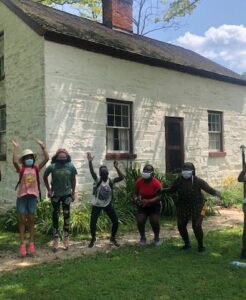
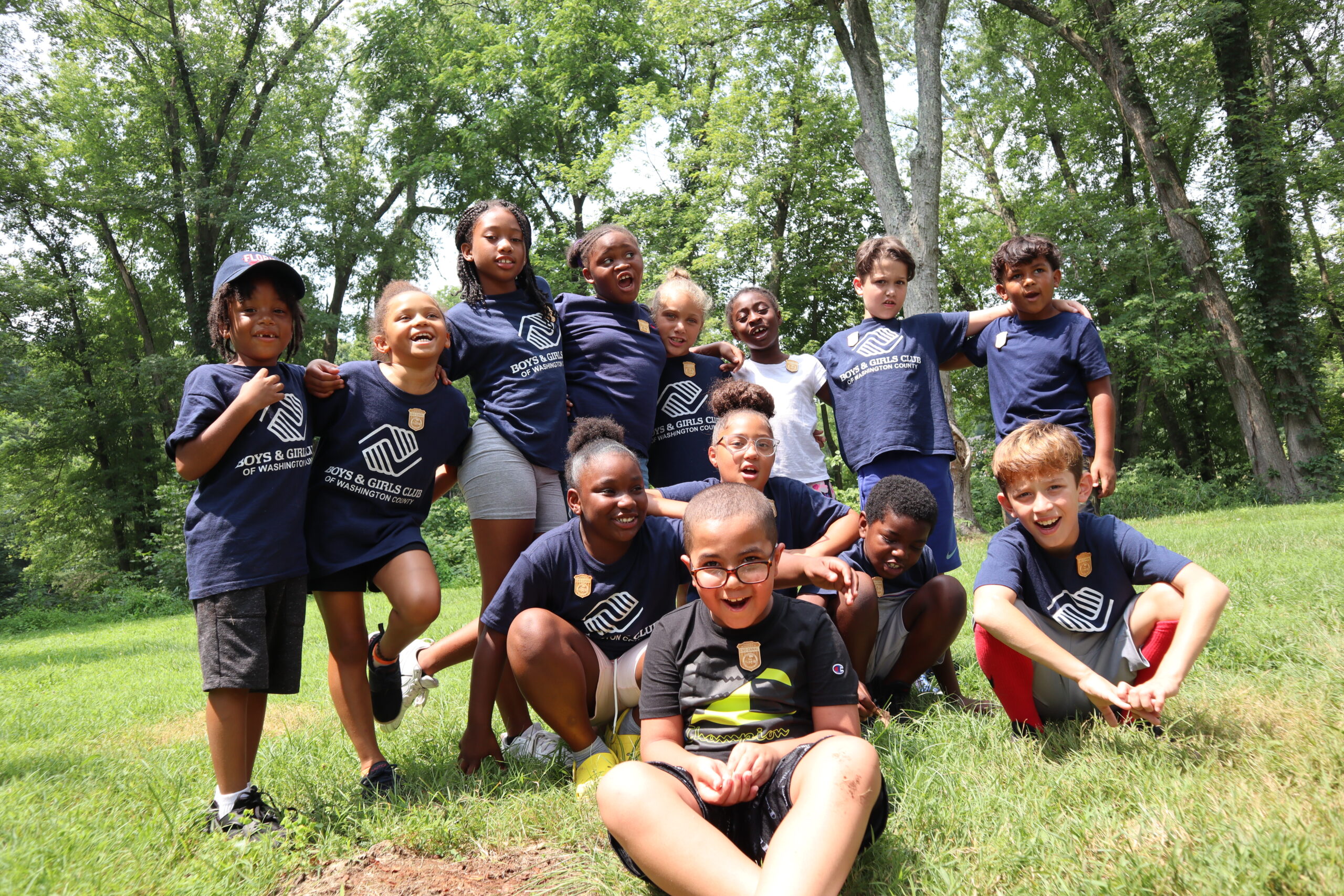

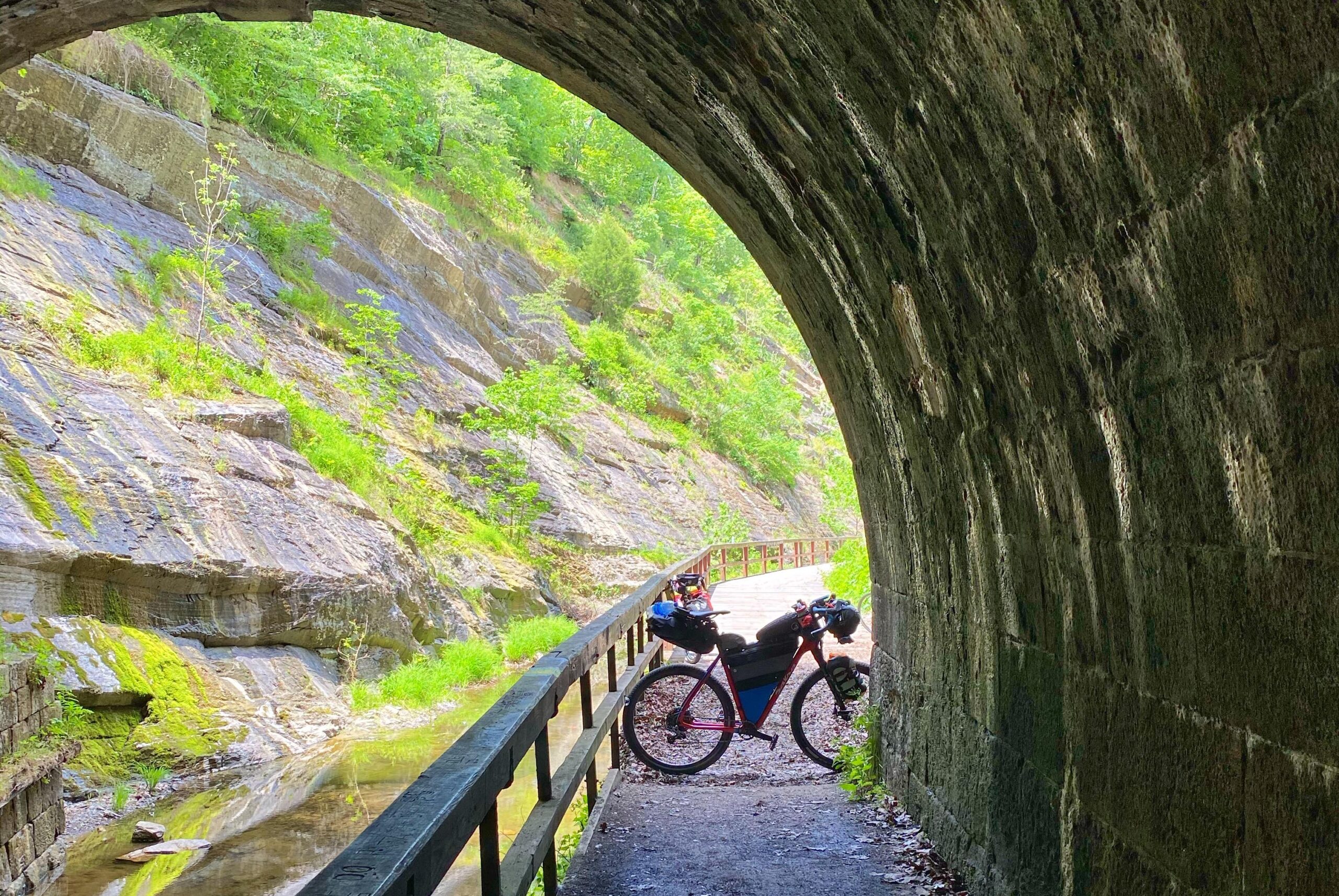
To celebrate the 50th anniversary of the C&O Canal becoming a National Historical Park, we are featuring 50 Canal Stories throughout 2021. Each story will take a look at a person’s relationship with the C&O Canal. Whether an NPS ranger, a volunteer, or a visitor, everyone has a story to tell about the canal! If you want to share your story, submit it to us at the link here, email it to us at [email protected] or post it on your social media feeds with the hashtag #MyCanalStory.
Thomas Lynch, Thru-Ride Biker
Thomas: In 1989, I decided to bike the C&O Canal, starting from my then-home in Alexandria, to Cumberland, MD, where I would be picked up at the Western Maryland Train Station by a friend’s family, who live in Burlington WV. The Burlington Apple Harvest Festival was going that weekend, so I was going to make a long weekend of it. I started on Friday morning, to overcast skies and cool October weather. By the time I made it to White’s Ferry, the skies opened up and a strong thunderstorm made my continued travel impossible. I tucked under the eaves of one of the buildings there to ride out the storm. The storm passed quickly, but made the journey one of battling puddles and mud…mud…mud! I struggled, riding my 1984 Raleigh Record road bike (!!) but made it to my midpoint overnight, in Shepherdstown WV. I checked in at the Thomas Shepherd Inn, a gorgeous Bed and Breakfast in the middle of town. The inkeeper met me at the door and saw me covered head-to-toe in mud. She didn’t blink, got me towels and showed me to the shower. I was tired but pleased, and wanted some food! Pizza was at the top of my list. The innkeep scowled at the notion of wanting pizza in a visit to Shepherdstown, with the Yellow Brick Bank and The Bavarian Inn in close proximity. Alas, Pizza and beer prevailed, so she begrudgingly pointed me to a Shepherd College haunt nearby. It was one of the best meals of my life. I hobbled back to the B&B and tucked in for a much needed sleep. The next morning I awoke and ambled downstairs where the innkeeper was preparing breakfast of poached eggs, toast, and fresh squeezed orange juice for the guests. I didn’t like the idea of waiting too long to get back on the towpath, but I couldn’t pass up breakfast. After a pleasant meal and conversation with the inkeep and guests, I mounted up and hit the road. The weather had cleared beautifully, It was crisp and clear – a perfect early fall day on the towpath awaited. I took my time admiring the locks and aqueducts and especially the Paw Paw Tunnel. The guardrails in the tunnel boasted deep grooves worn and polished into the wood by barge tow lines from over one hundred years prior. Rolling though Oldtown the day turned into evening and darkened, so my final miles on the towpath were in the dark. I was nervous, but completed the journey with no troubles. My friend’s father, a former Marine, was at the Western Maryland train station waiting for me. I heard him chatting with someone there about my trip, and the person told him that someone he knew (also a Marine) had made the trip on bicycle in one day! I couldn’t imagine making that kind of speed, but I was proud of my accomplishment regardless. The beautiful canal and Potomac River scenery, its history, the wildlife, the little towns and and people I met along the way are forever embedded in my memory
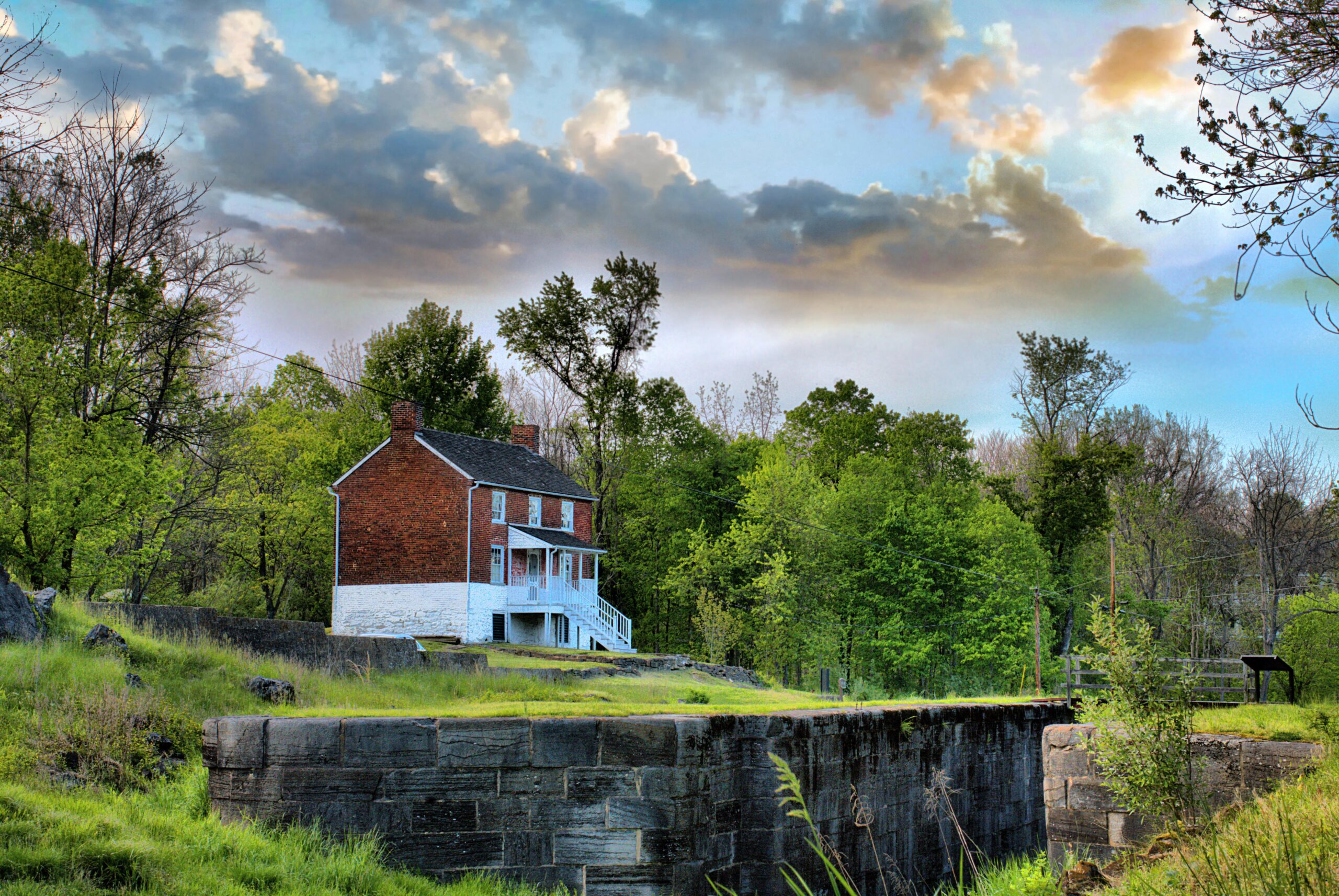
To celebrate the 50th anniversary of the C&O Canal becoming a National Historical Park, we are featuring 50 Canal Stories throughout 2021. Each story will take a look at a person’s relationship with the C&O Canal. Whether an NPS ranger, a volunteer, or a visitor, everyone has a story to tell about the canal! If you want to share your story, submit it to us at the link here, email it to us at [email protected] or post it on your social media feeds with the hashtag #MyCanalStory.
Bill Justice, Former Chief of Interpretation
Bill Justice: It all started with a hike on the towpath.
I grew up in western Maryland. When I was a scout the park created the 184 Miles of Adventure hikes with the Boy Scout councils. We could earn patches and rockers for completing sections. So our troop went on many of those hikes, canoed the Paw Paw Bends, stayed in the group campground at 15 Mile Creek, listened to the trains come through the tunnels all night. It was also a great place for day hikes and family canoe trips, so it became a part of growing up there.
Fast forward to 1974. I was looking for a summer job. At the unemployment office I sat at the guy’s desk and naively asked if they had any jobs involving history since that was my major in college. He pulled out a file card and told me to see the ranger at Four Locks. That summer my job was to keep people from parking on the grass at the Four Locks parking area. It was pretty boring so I learned what I could about the park history and began to share that with visitors. I ended up spending four summer seasons patrolling from Williamsport to the downstream end of the tunnel and doing programs at areas along the canal.
Fast forward to 2000, I took the job of Chief of Interpretation at the park. Over those ten years we improved the canal boat operations, coordinated the 50th anniversary of the Hike that Created a Park, improved several visitor centers, supported the start and growth of the Trust, created the interpretive elements of the Canal Quarters program, replaced almost every wayside exhibit in the park, expanded the Bike Patrol program, and hired some amazing people who have moved on to great things. I left to be the Superintendent of Abraham Lincoln Birthplace in 2011. In 2015 I became Superintendent of Vicksburg National Military Park.
While you might think that being the Superintendent of Vicksburg had little to do with C&O Canal two of the park division chiefs I hired have C&O Canal backgrounds too. Chief Ranger Rachel Strain Davidson started her career as a park ranger in Cumberland. Among other things she worked with the Bike Patrol there. More recently Brendan Wilson moved from Georgetown to the Chief of Interpretation, Education, and Partnerships at Vicksburg. My involvement in the early years of the Trust helped me support a now rapidly growing friends group, the Friends of Vicksburg National Military Park and Campaign. They have been very successful in raising funds for a $500K project supporting the expansion of Vicksburg.
Now I’ve retired from the Service. Of all the parks I’ve worked in C&O Canal is the one I’ve spent most time in and learned most from. Working with the communities and the partners, particularly the Trust, the Association, and all of the park volunteers, has been a great honor and privilege. I’m happy that I could help.
It all started with a hike on the towpath.
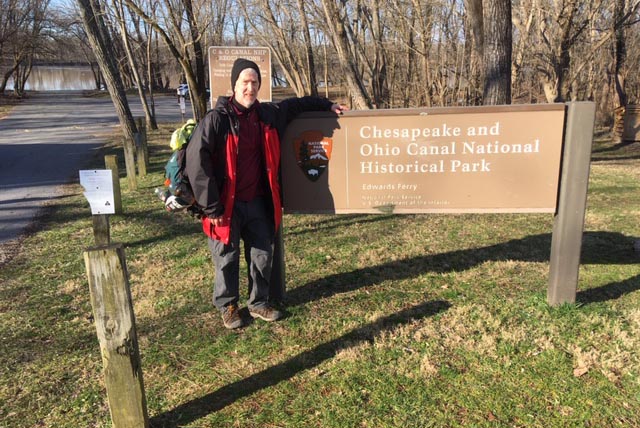
To celebrate the 50th anniversary of the C&O Canal becoming a National Historical Park, we are featuring 50 Canal Stories throughout 2021. Each story will take a look at a person’s relationship with the C&O Canal. Whether an NPS ranger, a volunteer, or a visitor, everyone has a story to tell about the canal! If you want to share your story, submit it to us at the link here, email it to us at [email protected] or post it on your social media feeds with the hashtag #MyCanalStory.
Ed Purcell, Former Park Ranger for NPS
ED Purcell: Between my love of history and hiking and being a former park ranger, I am always looking for a park to visit. My first visit to the C&O Canal happened when I was checking out Washington, DC for a potential job. It just so happened, that a friend of mine worked as a costumed interpreter on the canal boat in Georgetown. So I went on a ride and saw the towpath that I would soon become very familiar with.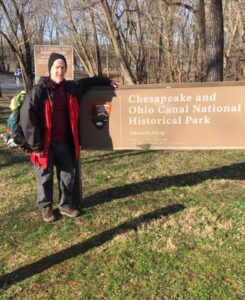
I landed the DC job and wound up working in Foggy Bottom and living in Germantown, MD. After work, I would occasionally go for a run up the towpath. On the weekends, I would ride my bike on different sections of the towpath up to Harpers Ferry. Over the course of five years, I became very familiar with the beauty of the park from Georgetown to Harpers Ferry. Whether running, walking or biking the towpath it was always a refreshing experience.
After five years of living in the DC area, I moved to New Jersey and the C&O Canal became a pleasant memory. That is until five years, when I joined FreeWalkers.ORG. They are a group that promotes the benefits of long distance walking, primarily in the Metro New York area. However, every February, they venture down to Potomac, MD for a fifty-mile Kennedy walk along the C&O Canal. They start walking at Old Anglers Inn at 3:30am! Fast walkers cover the 50 miles to Harpers Ferry by sunset with the rest finishing by 10:00pm.
A Kennedy walk commemorates the 1963 walking challenge made by President Kennedy. In an attempt to promote physical fitness, he challenged Americans to walk 50 miles in a day. The President enlisted his brother, Bobby Kennedy, to help promote the cause. On February 12, 1963, Bobby walked the 50 miles from Old Anglers to Harpers Ferry and helped spark (albeit a short lived) national walking craze.
For the last four years, I have enjoyed getting reacquainted with the C&O Canal. It is a truly beautiful place. I am thankful to all who take care of the park. I particularly liked one Facebook post about the volunteers who are painting the brown mileage markers. The markers are very helpful in keeping track of how far you have to go. Late in the day, it always seems that the markers are more than a mile apart.
There was no Kennedy 50 this year due to the pandemic. But returning to the C&O Canal in the dead of winter next year to walk 50 miles is high on my “post pandemic to do list.”
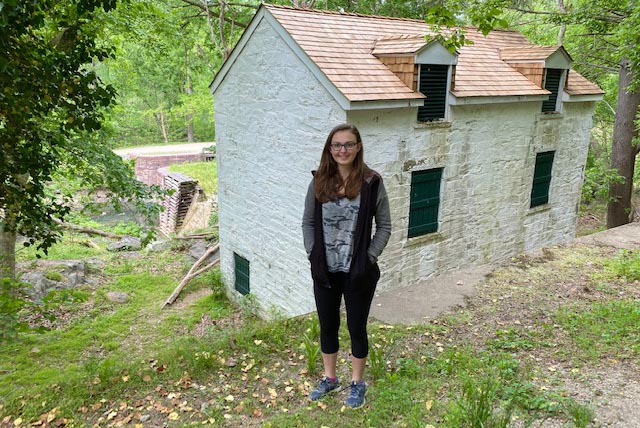
To celebrate the 50th anniversary of the C&O Canal becoming a National Historical Park, we are featuring 50 Canal Stories throughout 2021. Each story will take a look at a person’s relationship with the C&O Canal. Whether an NPS ranger, a volunteer, or a visitor, everyone has a story to tell about the canal! If you want to share your story, submit it to us at the link here, email it to us at [email protected] or post it on your social media feeds with the hashtag #MyCanalStory.
Emily Ewing, Neighbor to Lockhouse 10
My name is Emily Ewing, I am 19 years old and live a few miles from Lock 10. The canal has always been a big part of my life for as long as I can remember, especially frequent hikes on the Billy Goat Trail with my family! When I was in elementary school my Girl Scout Troop also volunteered at Riley’s Lock which was a wonderful experience. With the canal being so important to me, I decided for my senior year of high school capstone project (during the COVID lockdown in spring 2020) to write and illustrate a historical fiction short story about a girl whose family runs one of the locks near Widewater during the late 1800s. It is geared towards elementary-aged readers and is about 80 pages in a paperback format.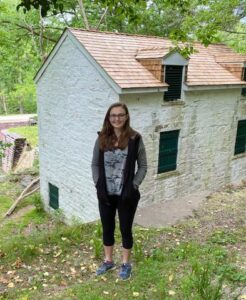
Read my story Ada Pierce, Canal Girl here.
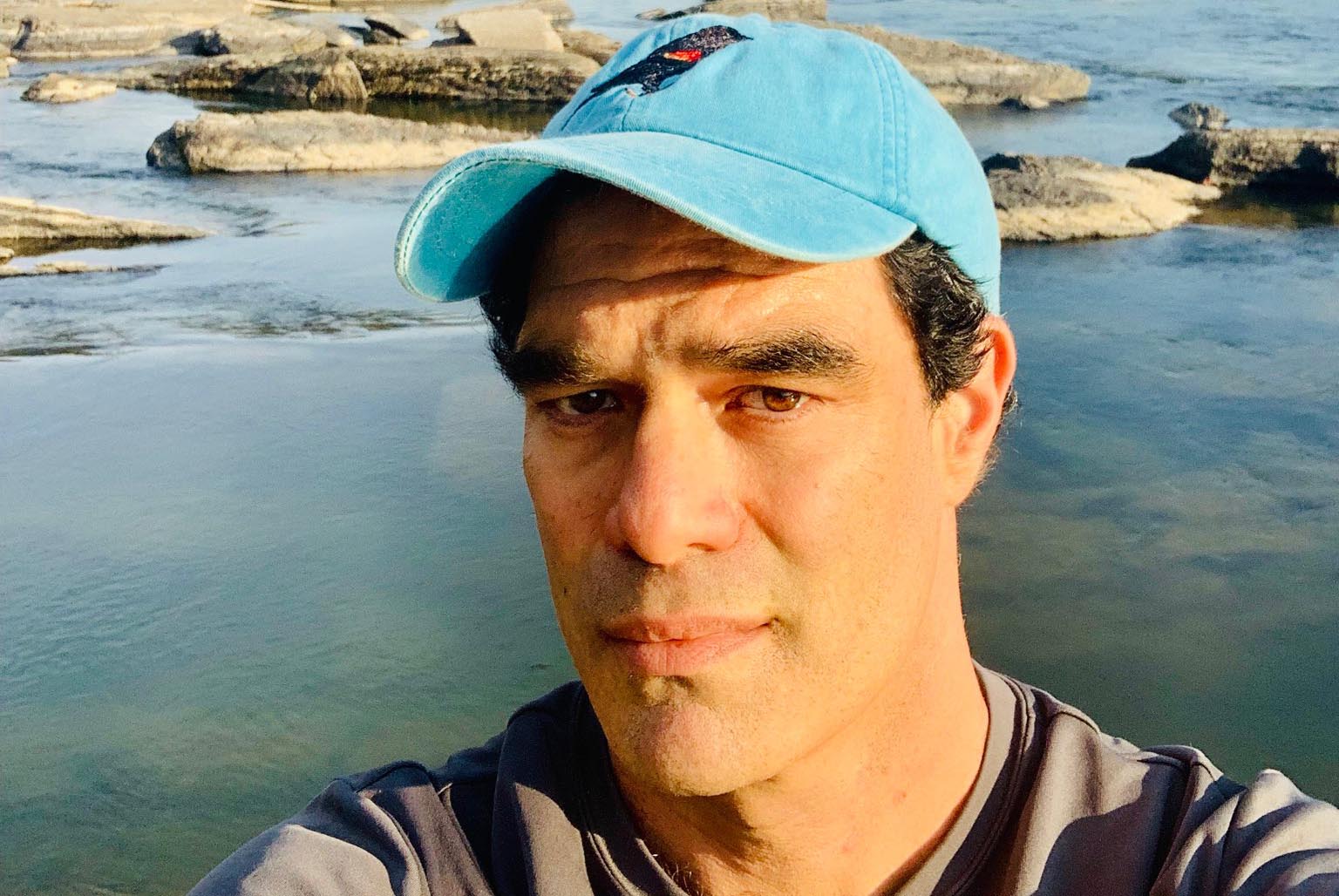
To celebrate the 50th anniversary of the C&O Canal becoming a National Historical Park, we are featuring 50 Canal Stories throughout 2021. Each story will take a look at a person’s relationship with the C&O Canal. Whether an NPS ranger, a volunteer, or a visitor, everyone has a story to tell about the canal! If you want to share your story, submit it to us at the link here, email it to us at [email protected] or post it on your social media feeds with the hashtag #MyCanalStory.
Jeffrey Blander, Photographer for the C&O Canal Trust
My Canal Story, Jeff Blander: A place of kindness, wonder, friendship, and healing
The C&O is truly special and magical for our family.
Upon first relocating to Maryland from being in residence for years in East Africa and Cambridge MA, we were immediately drawn to the beauty of the C&O. The breathtaking sunsets, diversity of wildlife, and welcomed escape from the intensity of the beltway.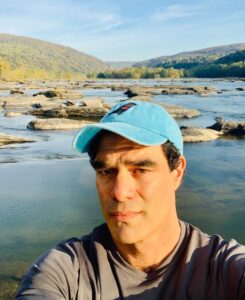
When I think of the C&O, the first thought that comes to mind is kindness. Our dearest friend Pat, before his illness and passing, worked the concession stand for years, at Great Falls, Maryland. Remembered for his bright smile, friendly demeanor, and tending a small ‘secret’ garden. When our daughter was a newborn, he would call out to us, “Daddy, how are you doing today?”, while handing us extra water on a hot summer’s day. We always feel Pat’s ‘presence’ as we pass by the stand, knowing those we love remain with us always.
Over the years we have of course enjoyed an array of stunningly flowers, swaying cattails, fragrant Springtime breezes, as well as beautiful creatures, including frogs, deer, hawks, bald eagles, beavers, catfish, snakes, blue herons, swallowtail butterflies, unidentified ‘fuzzy wuzzy’s, and even a’rainbowed’ painted bunting! Often inspiring us to share photos with friends and submit to the popular monthly contest. We estimate hundreds of posts have been viewed by many thousands around the world. Bringing joy and a smile to many.
As a distance walker, I have traveled the equivalent of several thousand miles along the towpath, taking in natural wonders, passing historic battlefields, and crossing over engineering marvels. This experience has included participating in the annual Kennedy 50 Mile Walk, traditionally taking place in February. There is truly nothing like being on one’s feet for 17 hours, braving the elements, to trek the 50 miles from the Old Angler’s Inn to Harpers Ferry with over 60 friends. Helping and encouraging each other along the way. Because we are all in it together.
But our family’s appreciation of the C&O has truly been magnified during an extraordinarily difficult year. Where a terrible pandemic stole so much from all of us. Yet, a constant salve throughout has been the beauty, peace, and tranquility the park has offered to all. Reminding us as Henry David Thoreau wrote, “Heaven is under our feet as well as over our heads.”

Early morning jog at Violettes Lock by Paul Graunke
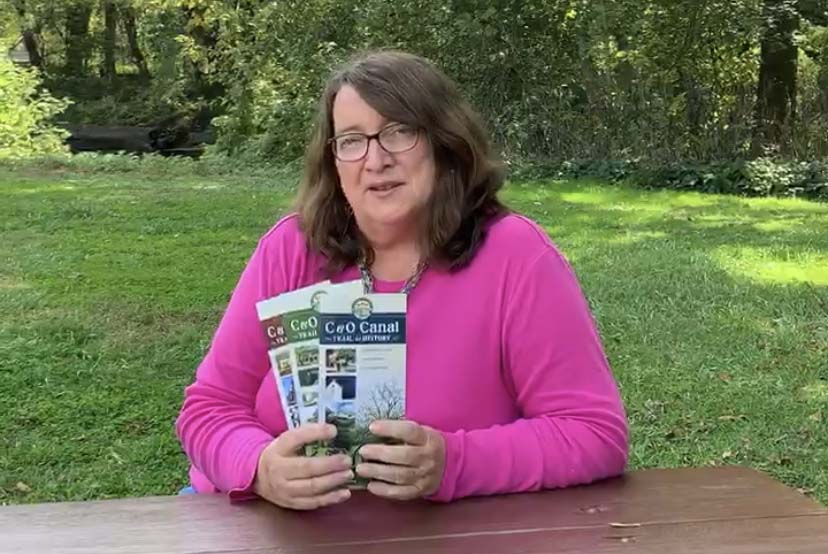
To celebrate the 50th anniversary of the C&O Canal becoming a National Historical Park, we are featuring 50 Canal Stories throughout 2021. Each story will take a look at a person’s relationship with the C&O Canal. Whether an NPS ranger, a volunteer, or a visitor, everyone has a story to tell about the canal! If you want to share your story, submit it to us at the link here, email it to us at [email protected] or post it on your social media feeds with the hashtag #MyCanalStory.
Abbie Ricketts, Chairman of the Board of the Canal Towns Partnership
Abbie: My canal story begins long ago, even before the C&O canal became a national park, when as a small child, my father and mother began taking me camping on the Maryland side of the Potomac River along the towpath. In those days, my father could drive “Martha”, our beloved old fishing car, on the towpath to our cabin or tent destinations as sections were once open to motor vehicles. The ride was a bumpy one. 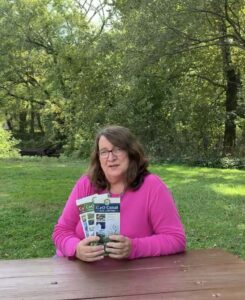
What wonderful times we had riding our bikes from our cabin at Brunswick to the Catoctin Aqueduct and back. Always was there something intriguing to see, something to hear, something to smell and something to imagine- how the canal must have looked when water once filled its basin. As a child, the canal was desolate to me in some ways, signs of its abandonment strongly present, a place lost in time.
Fast forward to present day, I have come full circle and the old canal is now one of the most visited national parks. It no longer feels desolate and it’s still keeping me busy! Serving on the Board of the Canal Towns Partnership for nine years, I am currently the chairman. Every day I do something involving the canal, whether communicating with others on projects and ideas or working to promote tourism related economic development in our ten Canal Towns. In addition, I’m a member of the Programs Committee of the Canal Trust. I’m also proud to be a Canal Steward and worked recently to establish a program in Brunswick led by Smoketown Rotary Club.
When I’m not working in my family business or volunteering, I enjoy taking day long trips with my family to either end of the canal and visiting the towns and points of interest in between. There is so much to see and do and all of our towns are so charming and inviting. I’m content in my canal world which is for me is a symbiosis of my passion for small town revitalization, heritage based tourism, nature, and outdoor recreation.
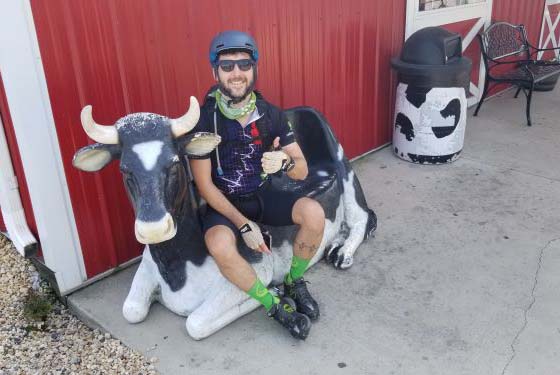
To celebrate the 50th anniversary of the C&O Canal becoming a National Historical Park, we are featuring 50 Canal Stories throughout 2021. Each story will take a look at a person’s relationship with the C&O Canal. Whether an NPS ranger, a volunteer, or a visitor, everyone has a story to tell about the canal! If you want to share your story, submit it to us at the link here, email it to us at [email protected] or post it on your social media feeds with the hashtag #MyCanalStory.
Kevin Belanger, Manager of Trail Planning at Rails-to-Trails Conservancy
C&O Canal Trust: When did you first learn of the C&O Canal?
Kevin: I moved to Frederick, Maryland when I was 11. Growing up in New England, I had never heard of it before then. But I joined a Scout troop and we did an overnight bike trip on the canal sometime soon after moving there. It was tough on my department store bicycle, but it was so cool to know that a trail existed that could take me all the way into Washington, DC or all the way to Cumberland and beyond.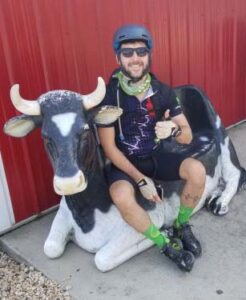
C&O Canal Trust: What is it like working for Rails-to-Trails Conservancy? What is your job?
Kevin: I am the Manager of Trail Planning at Rails-to-Trails Conservancy. It is the kind of job I didn’t know existed when I was growing up, but all of my life choices were guiding me to it without even knowing it! I support the planning side of several of our trail network-building projects around the country, most notably the Great American Rail-Trail, which is a multi-use, cross-country trail that is already more than 53% complete. The C&O Canal Towpath is a major section of that route. It is an exciting job, working with all of the partners across the route who help develop and maintain the trails that make up the Great American Rail-Trail. I want to give a major kudos to the Park for working on a 5-year resurfacing plan for the towpath as well. Keeping the surface in good condition will encourage more people to use it, including those with disabilities, which helps level the playing field.
C&O Canal Trust: Tell us more about your through-bike ride last summer. How long did it take to complete your ride and what was your favorite part?
Kevin: My friend, Price, and I made a plan to bike from Pittsburgh to DC a few years ago, and we were committed to doing it in summer 2020. Well, the pandemic happened, and we assumed we would have to postpone. However, as the spring turned into summer, we realized we’d be comfortable doing it as long as we camped the whole time and separated from others. I’m so glad we didn’t postpone the trip! We went in August 2020 and took 6 days total to complete the journey. It was amazing to bike that far without having to interact with automobile traffic. We met some friendly people along the way and supported local businesses (my mission was to find an egg sandwich every morning in the first town we passed through, and I was pretty successful!). You can read more about my journey on the towpath on my blog here: www.bywayofthetrails.com and the journey starts on this post here https://www.bywayofthetrail.com/post/pittsburgh-to-dc-bikepacking-adventure-day-0.
C&O Canal Trust: Do you have a favorite memory of the Park?
Kevin: Like a lot of people, I turned to the Park during the pandemic. It was a place I felt safe outside with limited amounts of people. I reconnected with friends and family too. My friend Kate lives near Brunswick and started getting into biking just before the pandemic. When we felt safe to do so, we’d meet somewhere in the middle and bike together. We explored around White’s Ferry and Brunswick and Harper’s Ferry. I appreciate that it is always there and always open. It gets a lot of love – sometimes maybe too much love with the numbers of people who use it on popular days – but I think a lot of love is a good problem to have.
C&O Canal Trust: What is your favorite place or section of the Park?
Kevin: My favorite place in the Park was camping at the Sorrel Ridge campground. We won the lottery that night. We had just made it through the Paw Paw Tunnel and were tired and hungry. Sorrel Ridge was the first campground, and we set up shop. The weather for August could not have been better. Slight breeze in the air, low humidity, and the campsite was right along the Potomac. We ended up having the campsite to ourselves and even took a little dip in the Potomac (I knew I wouldn’t feel comfortable doing it further down river so this was my chance!). There were no mosquitoes too, which made it even better. 10 out of 10
C&O Canal Trust: What does the canal mean to you?
Kevin: I’ve moved around the country as an adult, but I moved back to Washington, DC in 2013 and have lived within a few miles of the canal ever since. The canal is a place to slow down. A place to feel history and nature in the modern day. A place to see wildlife – blue herons are my favorite, they look like tiny dinosaurs. The towpath is an accessible resource to a lot of people – it’s flat, the surface keeps getting better, and you can do a lot of things on it. It is a great outdoor adventure close to home. You don’t have to through-bike the route to experience the adventure, it’s right there for everyone. As a member of the LGBT community, it’s also a place where I always feel welcomed. I’m grateful that it exists and look forward to taking my children on it one day!
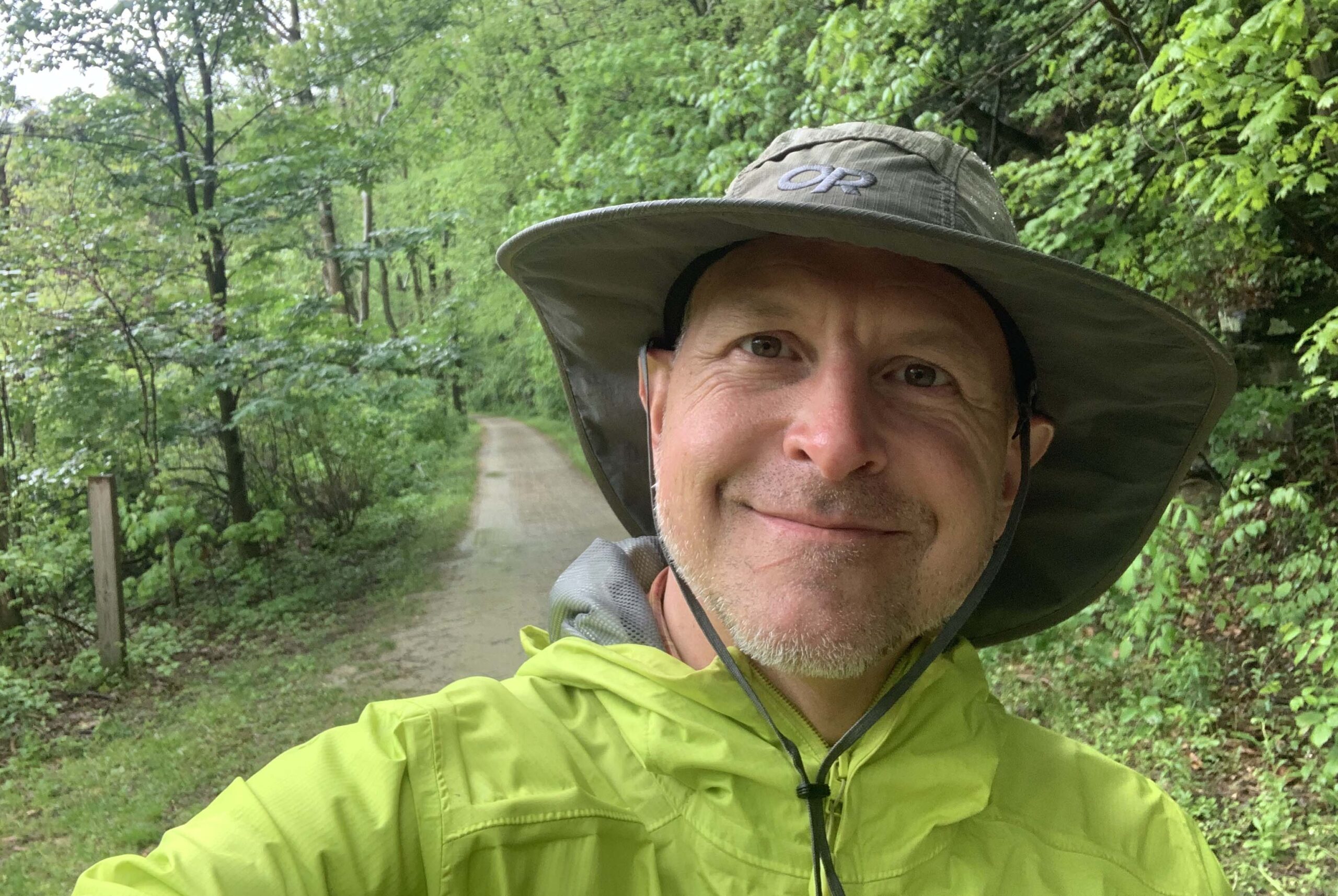
To celebrate the 50th anniversary of the C&O Canal becoming a National Historical Park, we are featuring 50 Canal Stories throughout 2021. Each story will take a look at a person’s relationship with the C&O Canal. Whether an NPS ranger, a volunteer, or a visitor, everyone has a story to tell about the canal! If you want to share your story, submit it to us at the link here, email it to us at [email protected] or post it on your social media feeds with the hashtag #MyCanalStory.
Doug Reigner, Director of Community Relations at the Great Allegheny Passage Conservancy
C&O Canal Trust: What is your history with the C&O Canal?
Doug: About 10 years ago a friend wanted to pedal from Pittsburgh to Washington DC. This is my first memory of researching and planning a visit to the national historic park, the towpath and the learning bits and pieces of the amazing history. We enjoyed pedaling past and stopping at many of the remnants of old canal and lock houses, the dams, and scenic views of the river. We visited Hancock, Harpers Ferry and Brunswick that year stopping to eat. It was such an adventure since it was my first time doing a multi-day travel by bicycle trip. 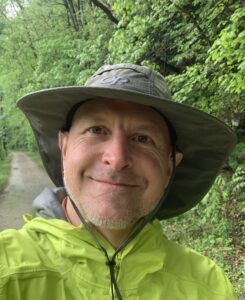
C&O Canal Trust: During your time volunteering with the Partnership, what is your favorite project you have been a part of?
Doug: Trails & Rails. I met Rita Knox, Park Ranger in Cumberland one year. Rita invited me to check out a Steward program where I’d ride the Amtrak train and engage travelers about the park. I signed up, drove 90 miles to Cumberland, met a bunch of enthusiastic park rangers and was hooked. During our training day I met Simon Barber and other great people who knew so much history about the park and nearby towns. People like Rita and Simon Barber were so inspiring to learn from. It was never a dull Amtrak ride meeting people, answering questions, giving out park information.
C&O Canal Trust: Do you have a favorite canal memory?
Doug: Silly but oh so true, my favorite canal memory is going to the Conocacheague aqueduct ribbon cutting ceremony in Williamsport and getting my picture taken with a park mascot who said “Hello Doug.” I was shocked the mascot knew me. Turns out it was a dedicated enthusiastic ranger whom I’ve met on several occasions. That ranger (Ben Helwig) like all the rangers I’ve met over the years are incredible people.
C&O Canal Trust: What is your favorite spot on the canal?
Doug: Tough question to answer, I have Favorites-s-s-s-s. The blue bells blooming near Hancock, the rock wall and river views west of Williamsport, the way the towpath reveals the Potomac river to me every time I pedal towards Harpers Ferry. Coming out from an otherwise quiet tunnel of towpath trees, I enjoy the explosion of people near Great Falls, then again near Georgetown. It’s like you’re in a forest then boom you’re in Georgetown! So many spots come to mind, like I said I have favorites, plural. Ask me after my next visit through the park and I’ll have more favorites to add to the list.
C&O Canal Trust: What does the canal mean to you?
Doug: To me the canal means I have a national park within few hours of my home where I can visit a dozen times a year. There is so much to see and it looks different from sunrise to sunset, from east to west that no matter how many bike rides they are all a little different. It means I don’t need to race around the country truing to see every park, this one has so much I enjoy seeing it more often!

